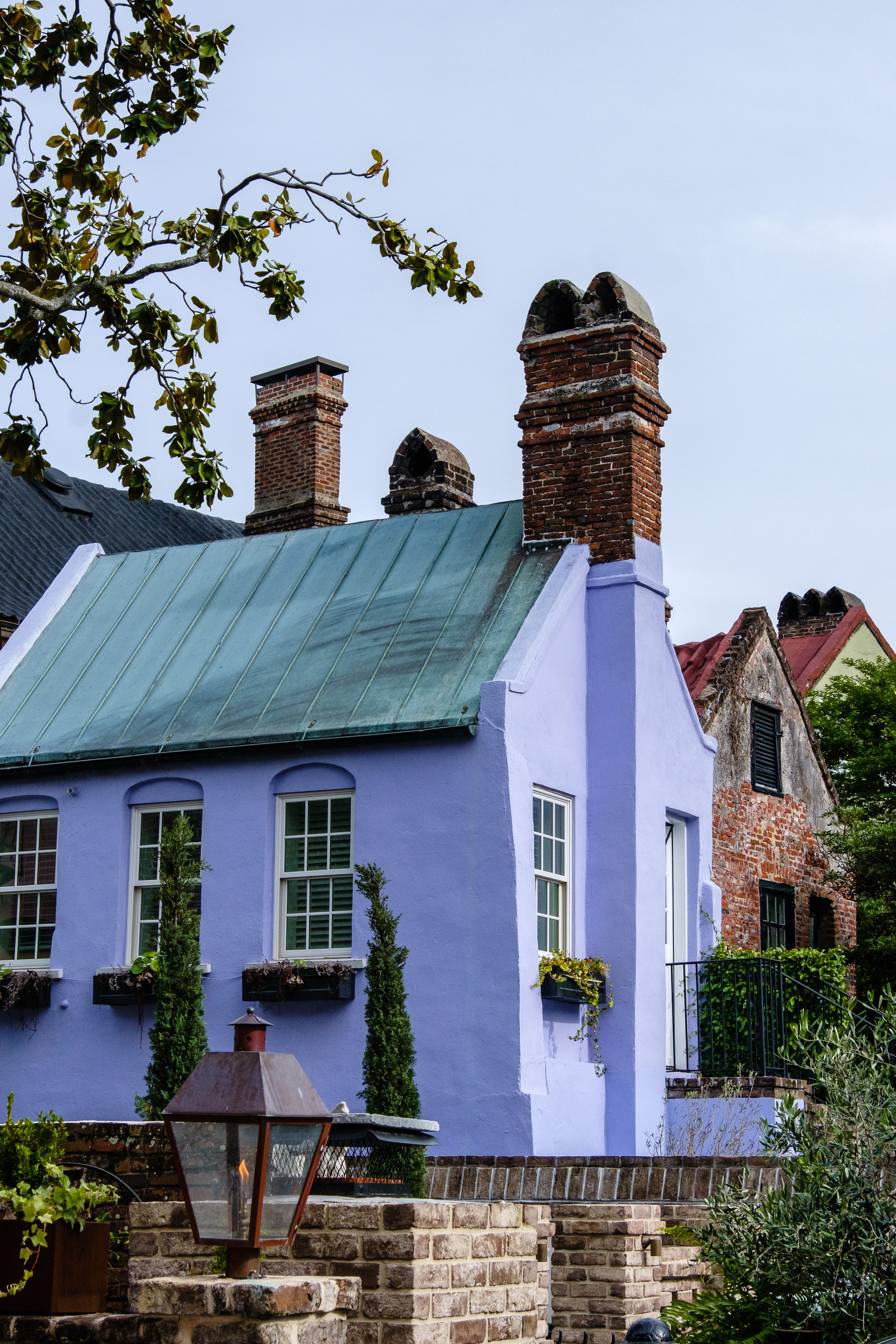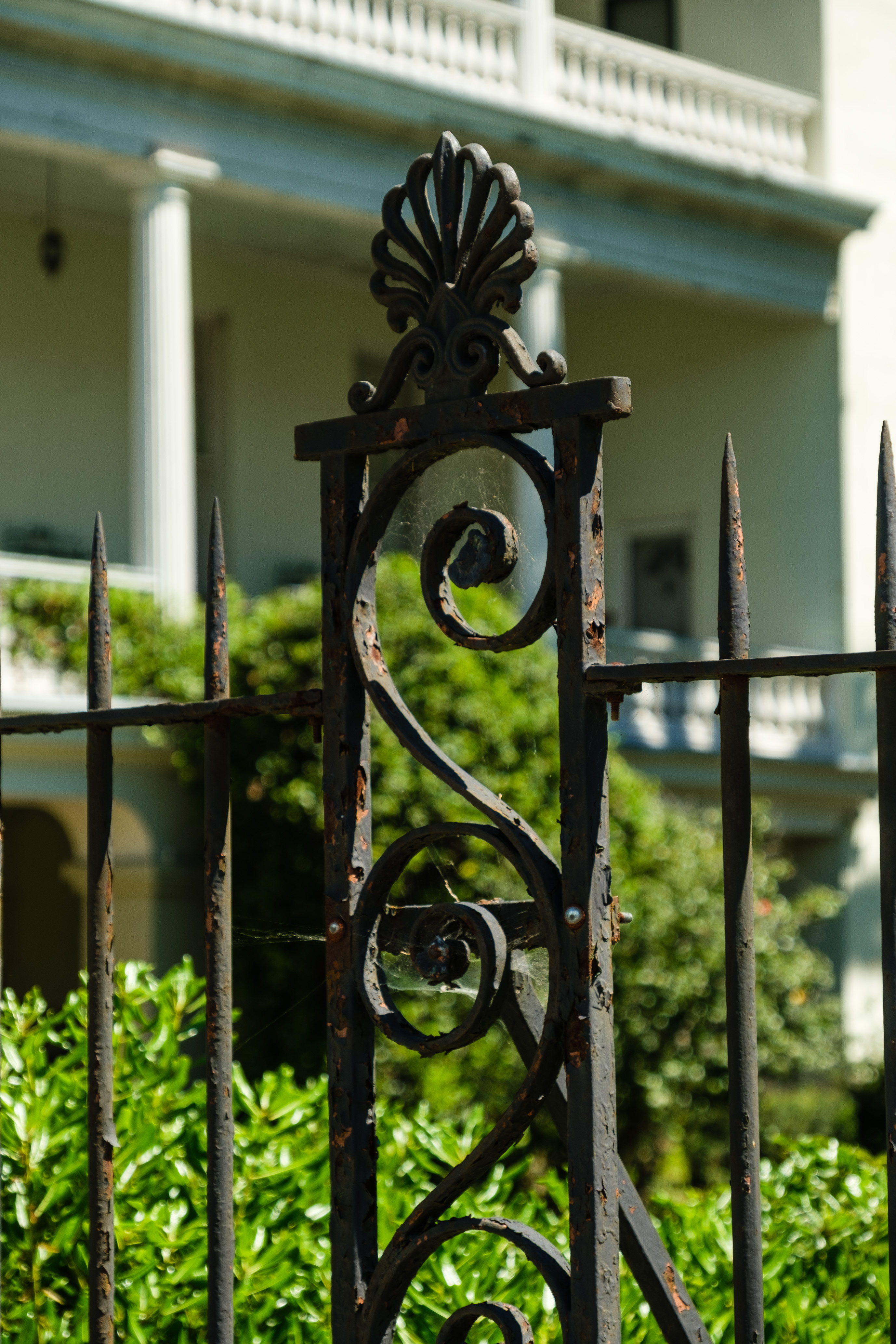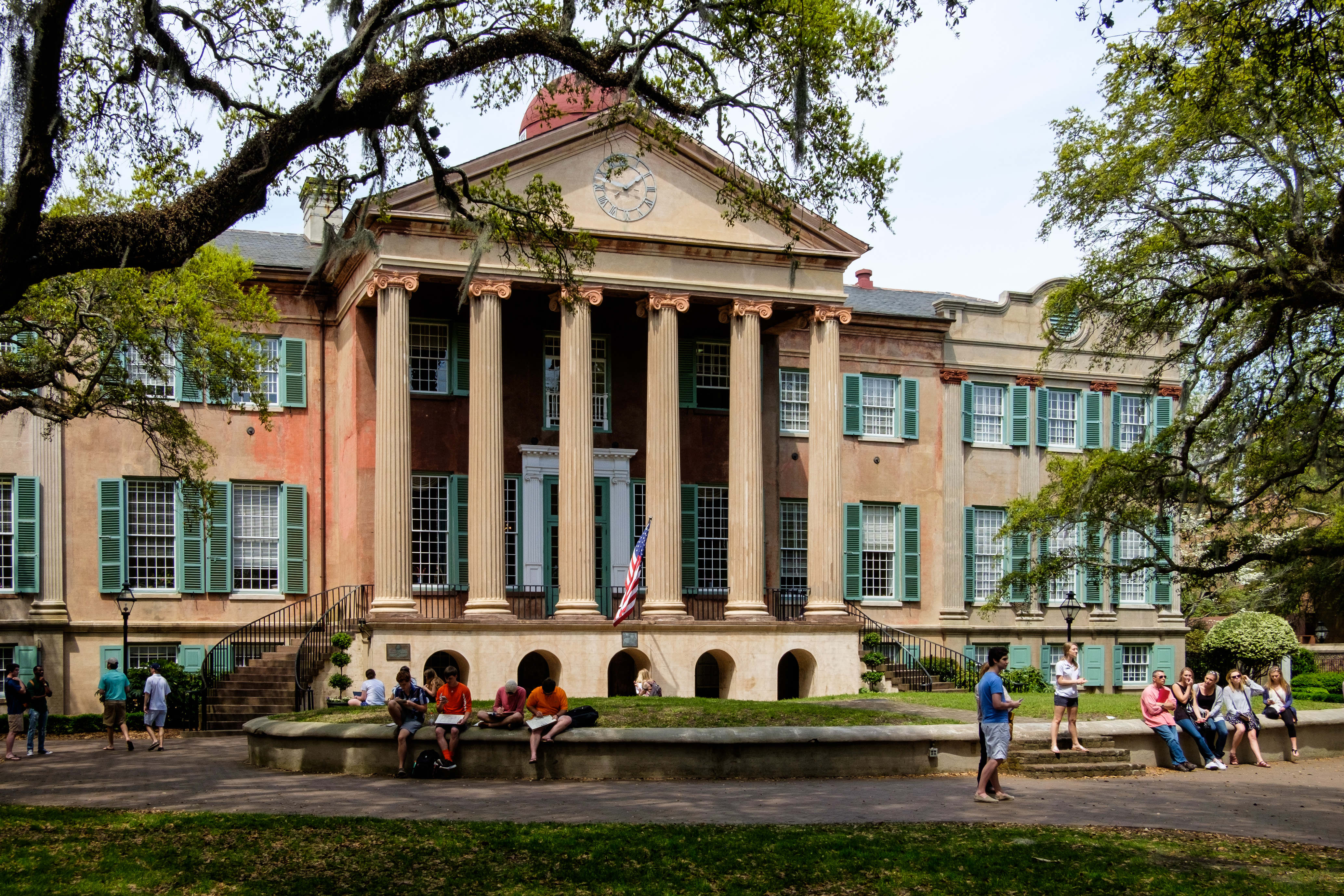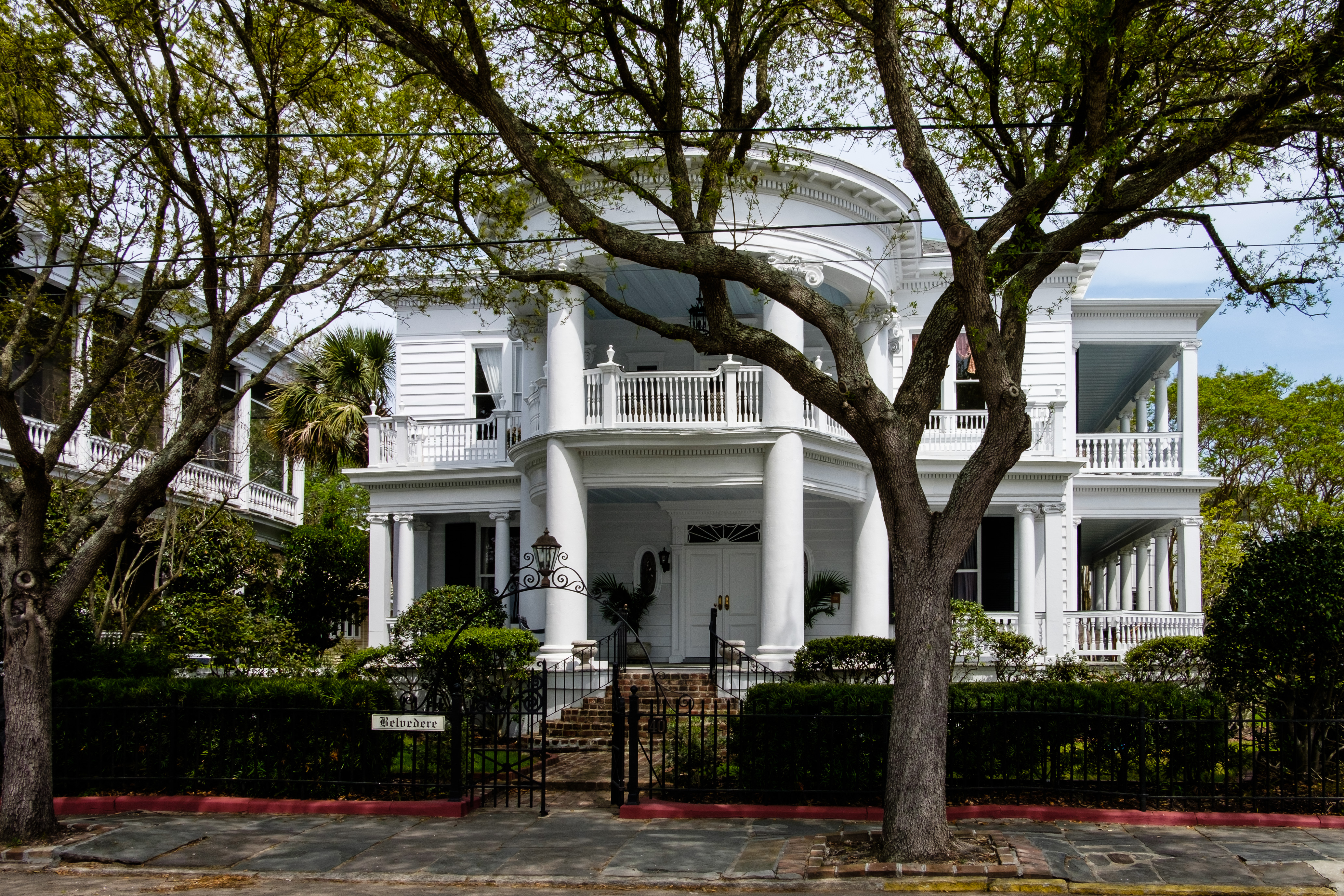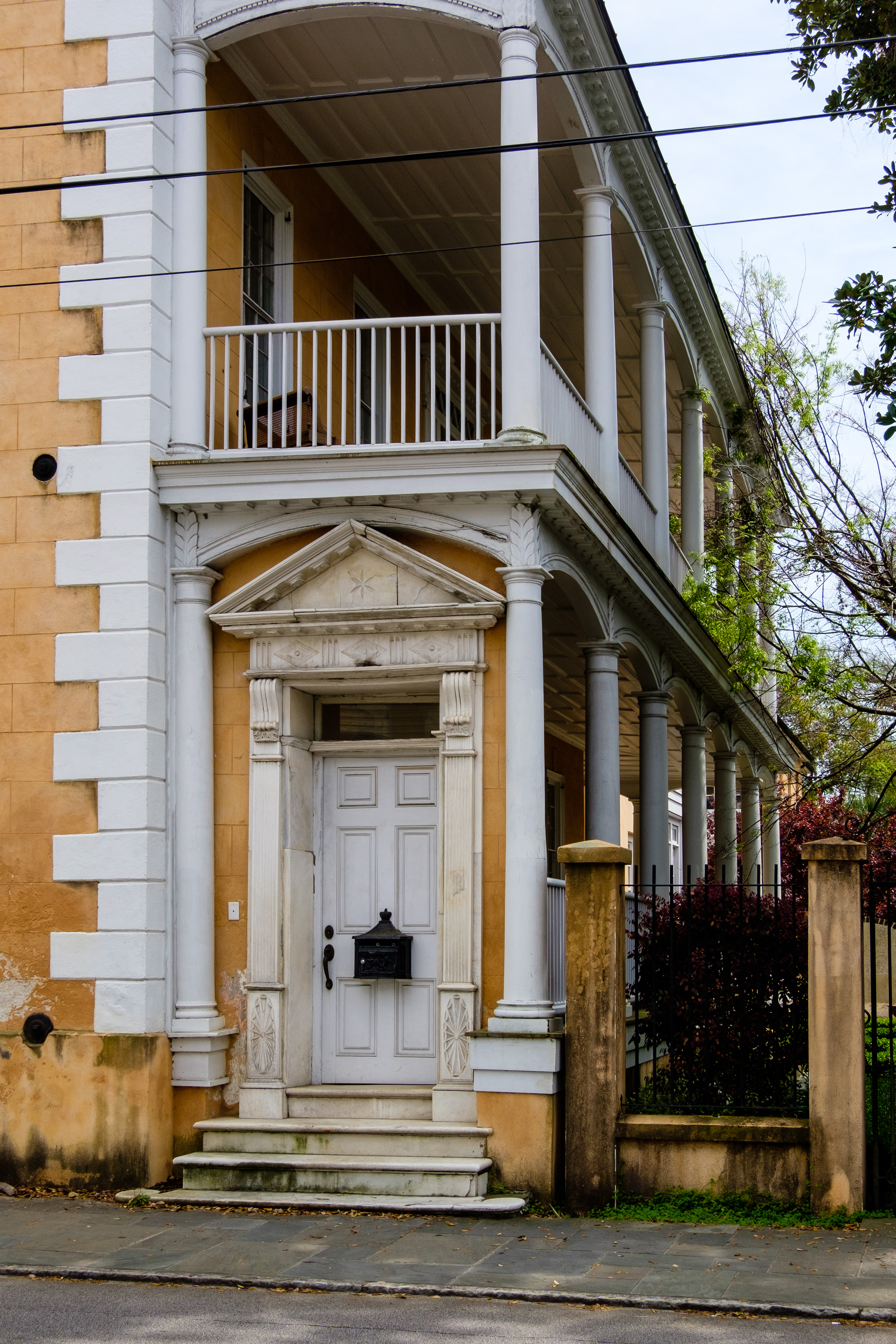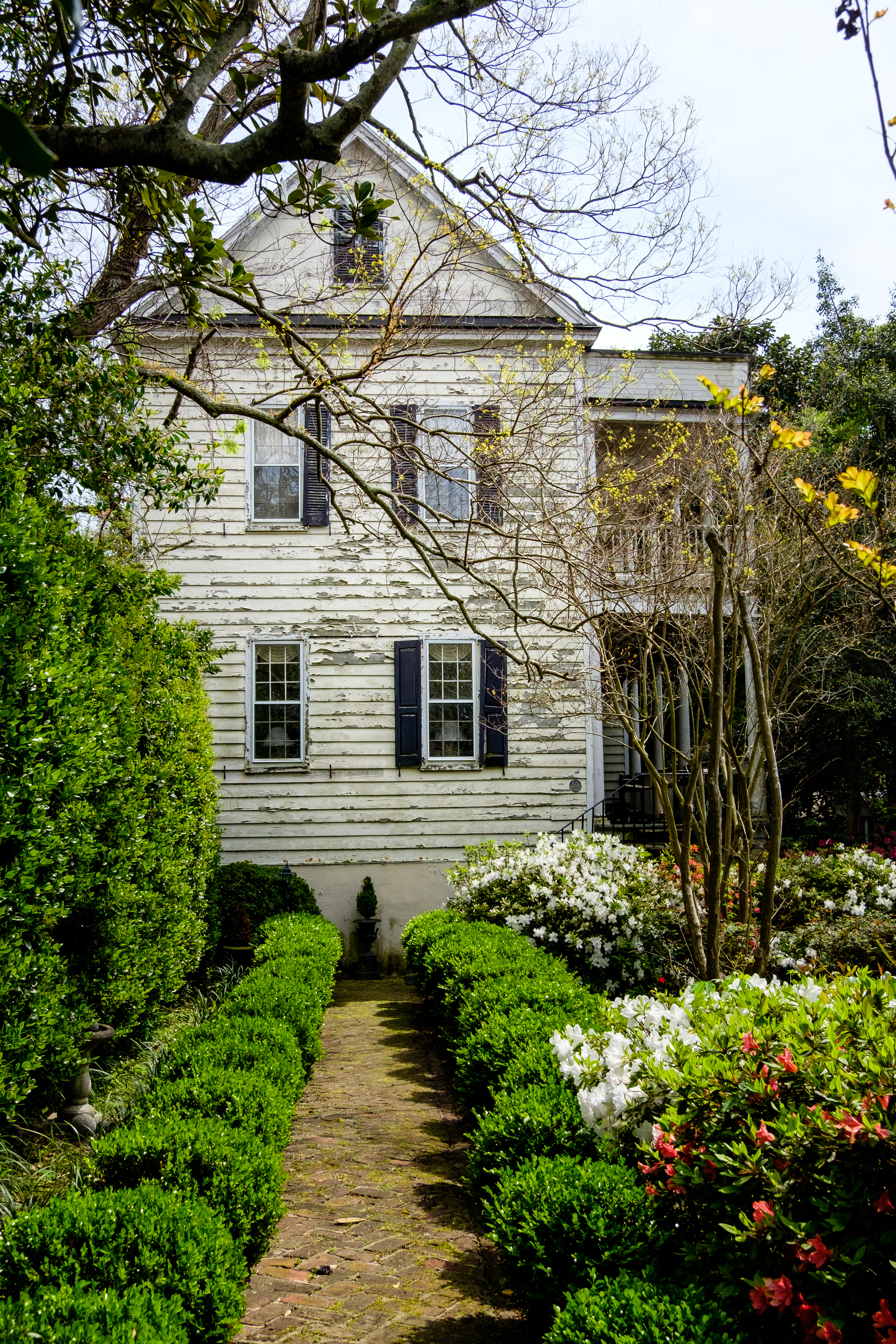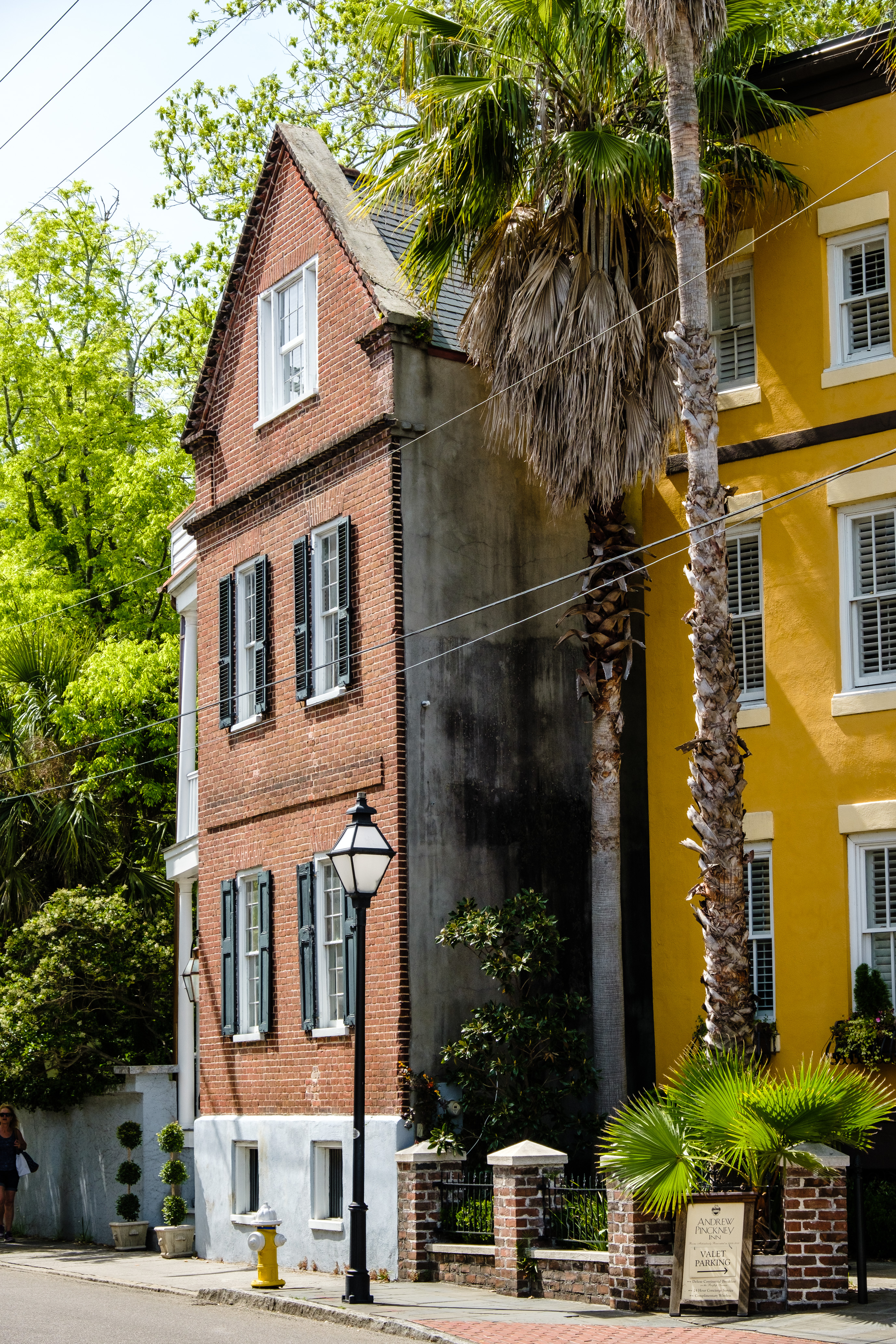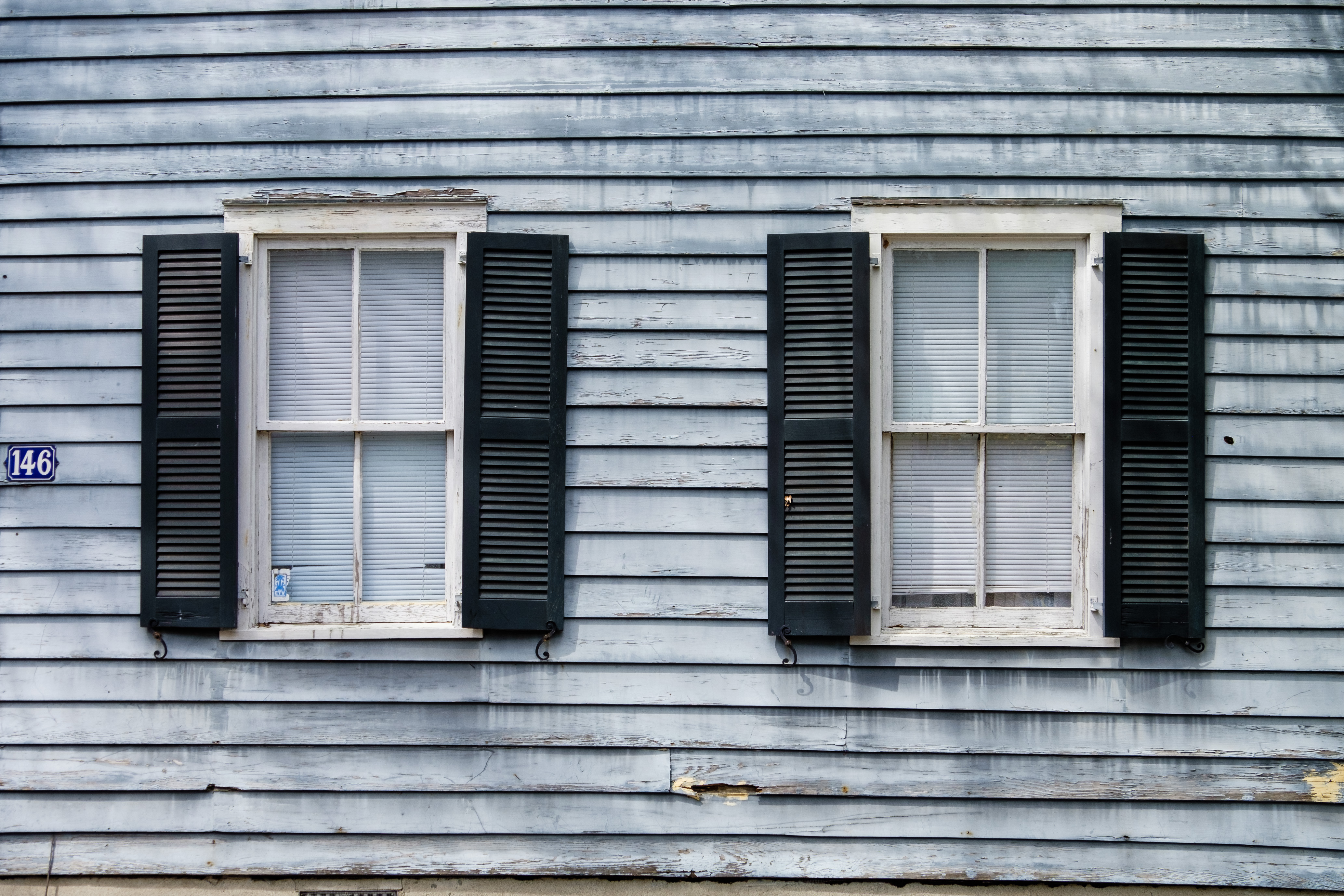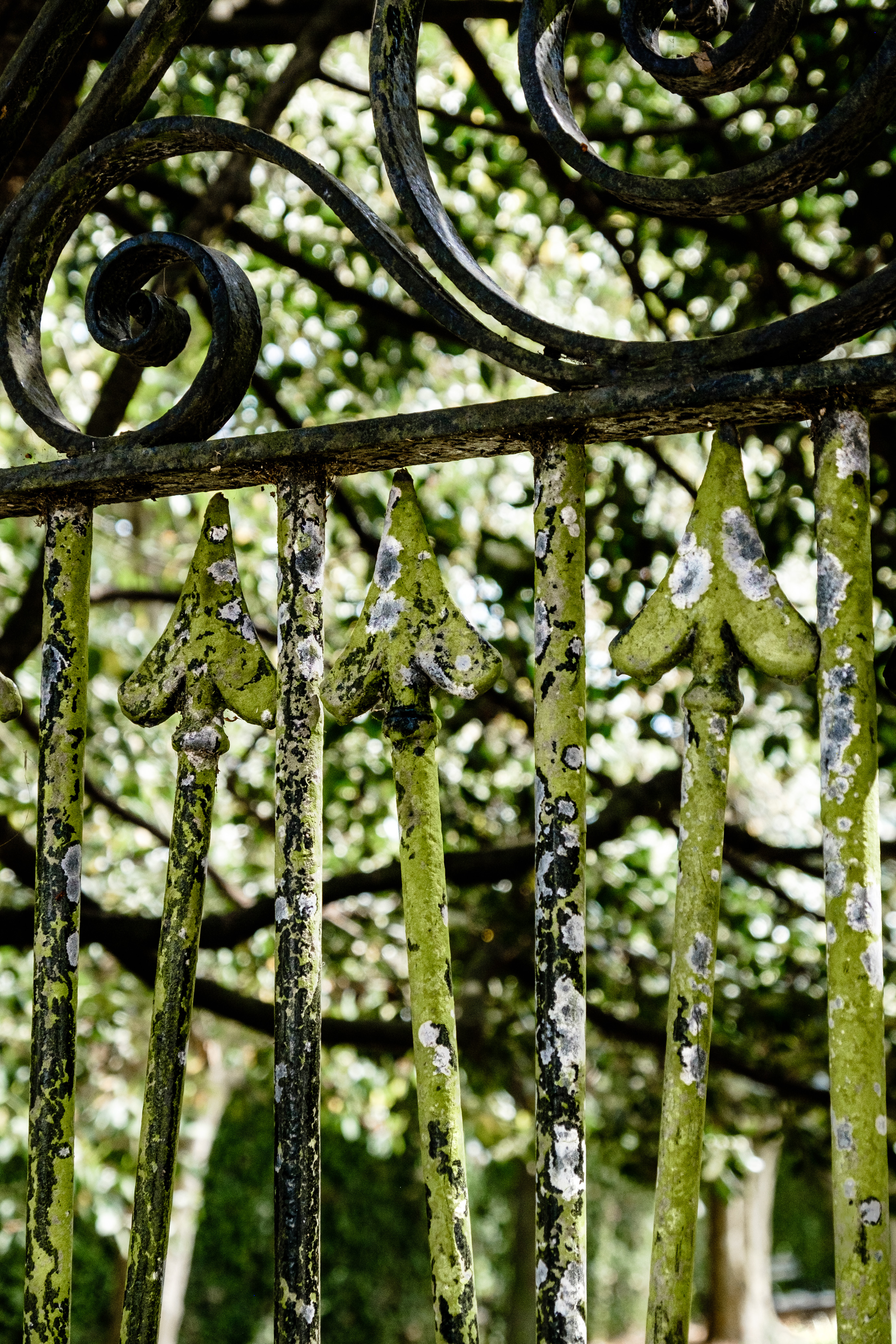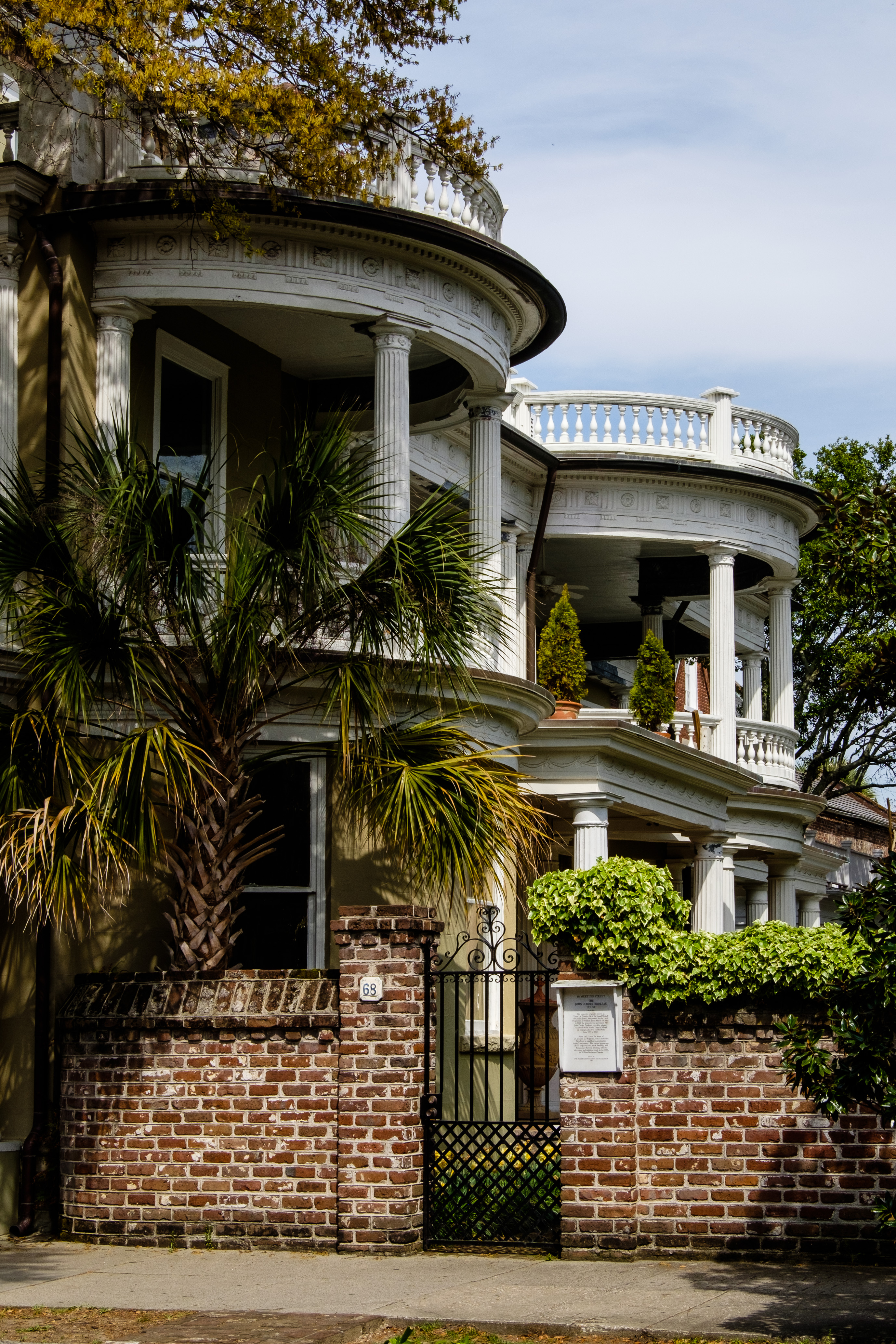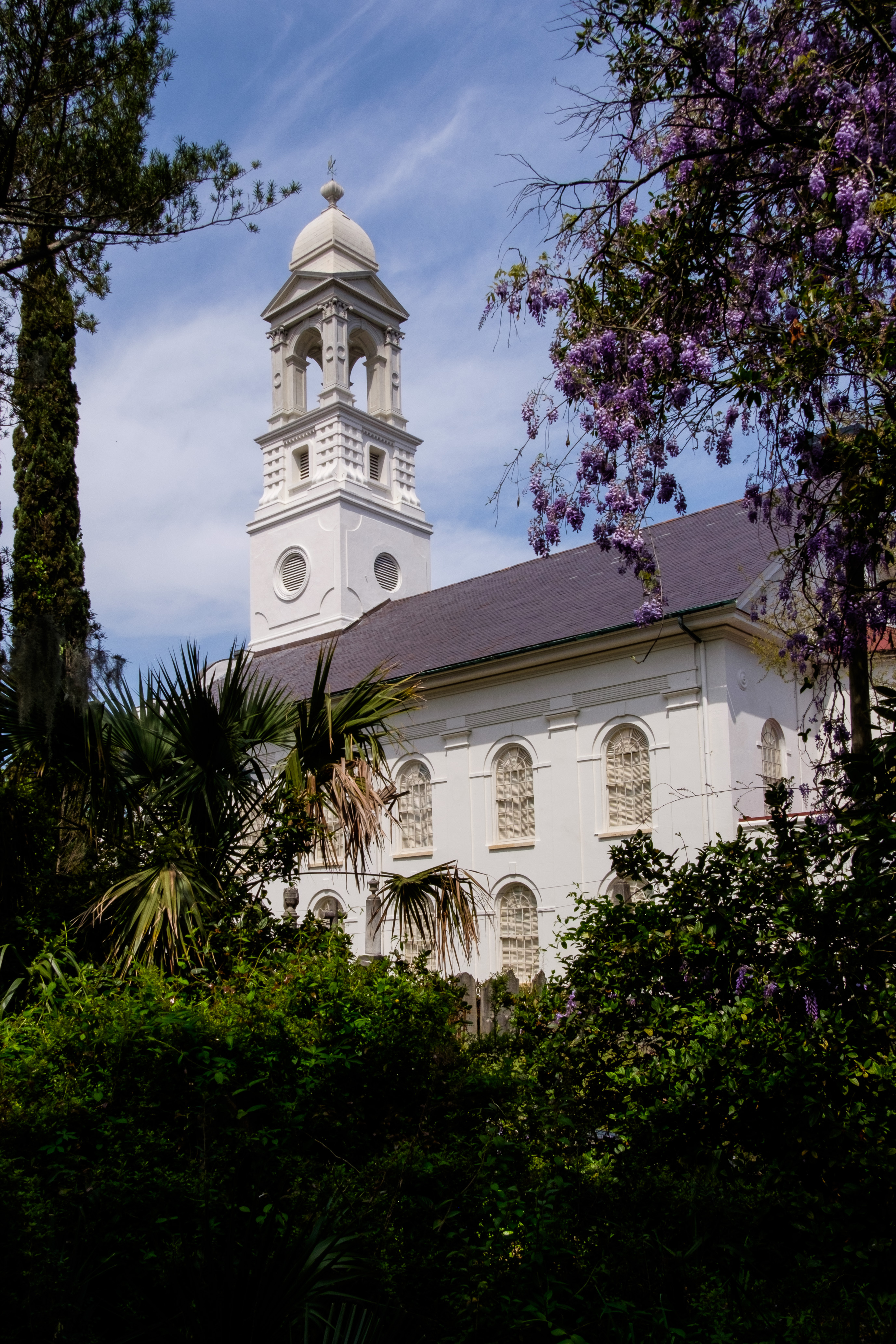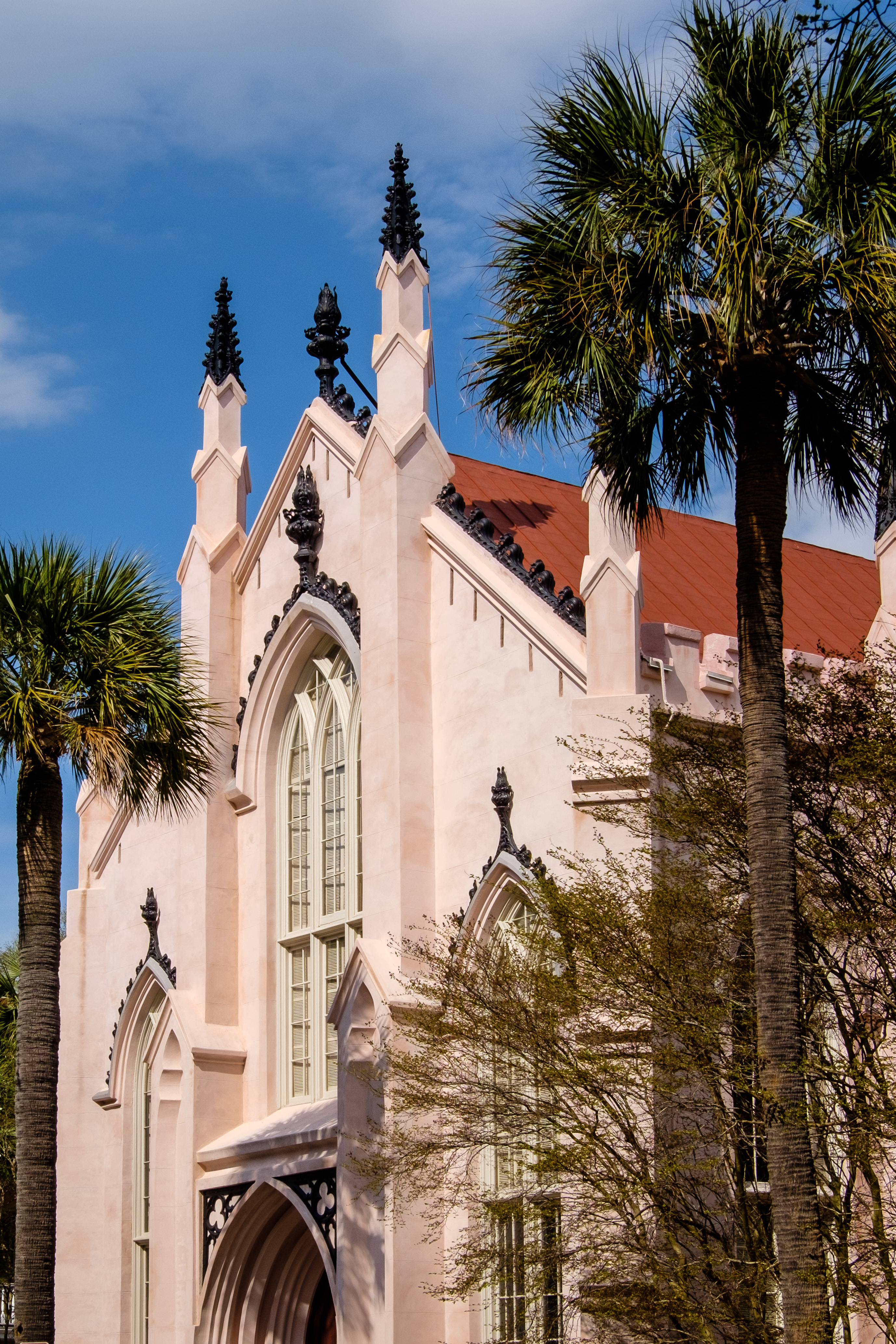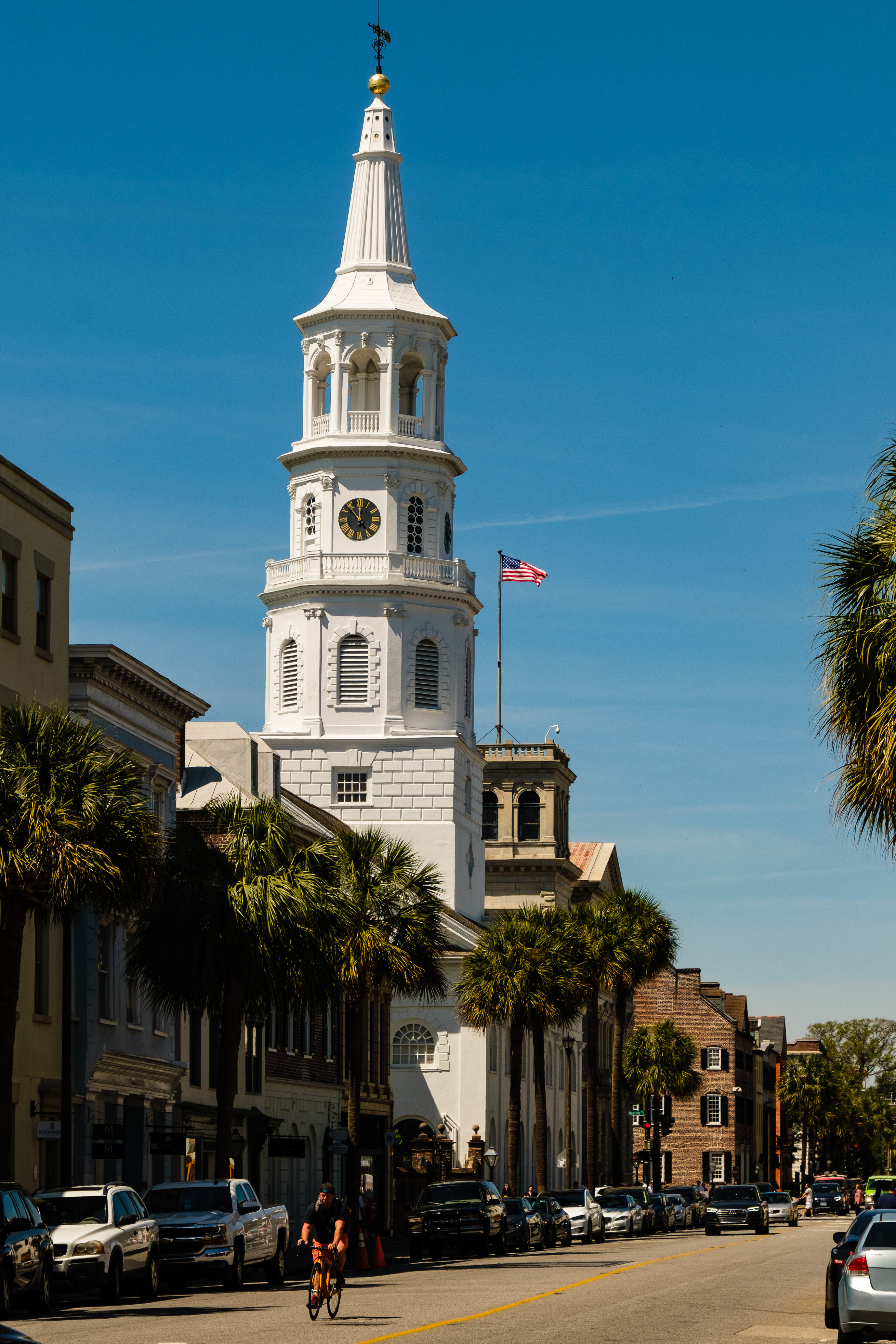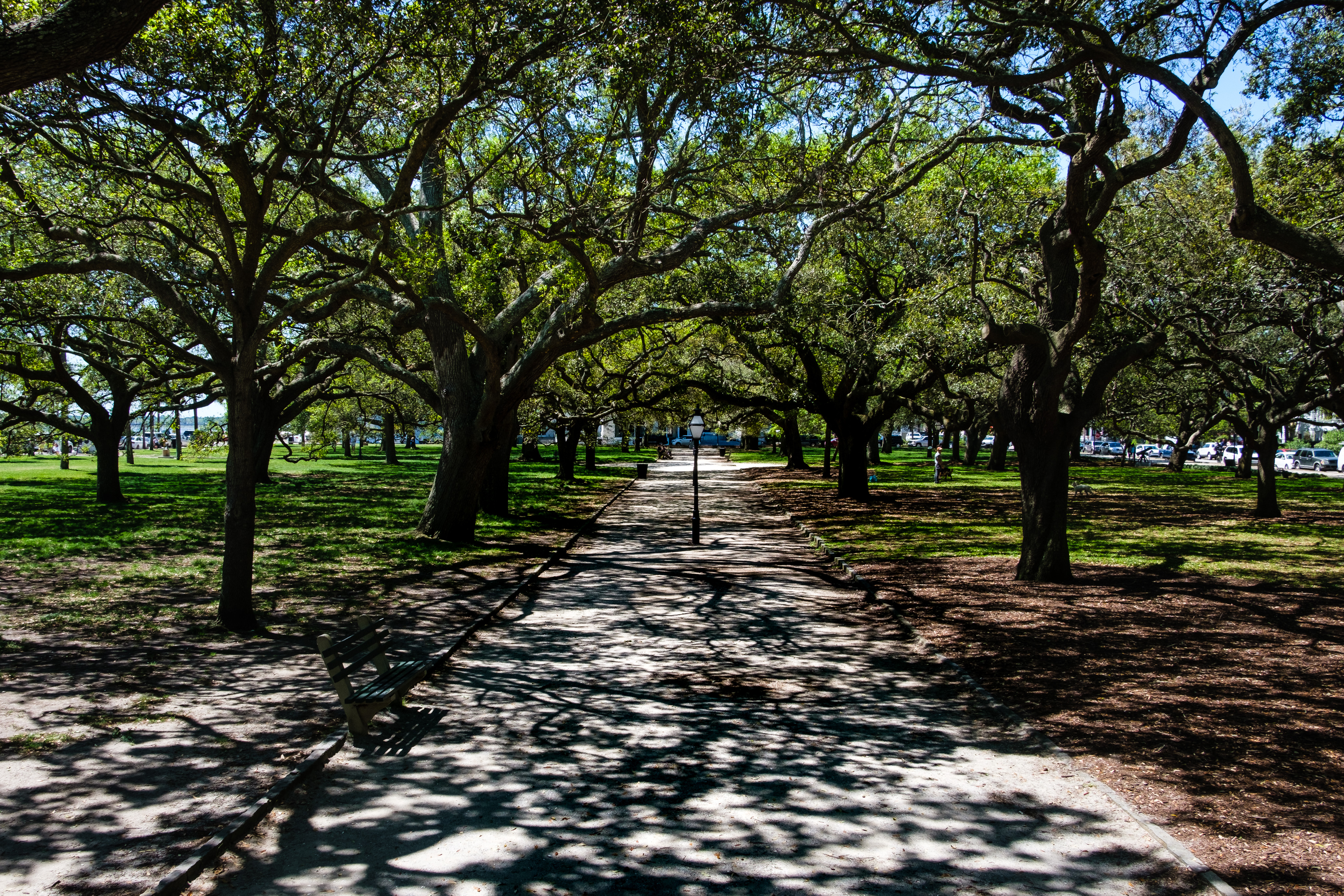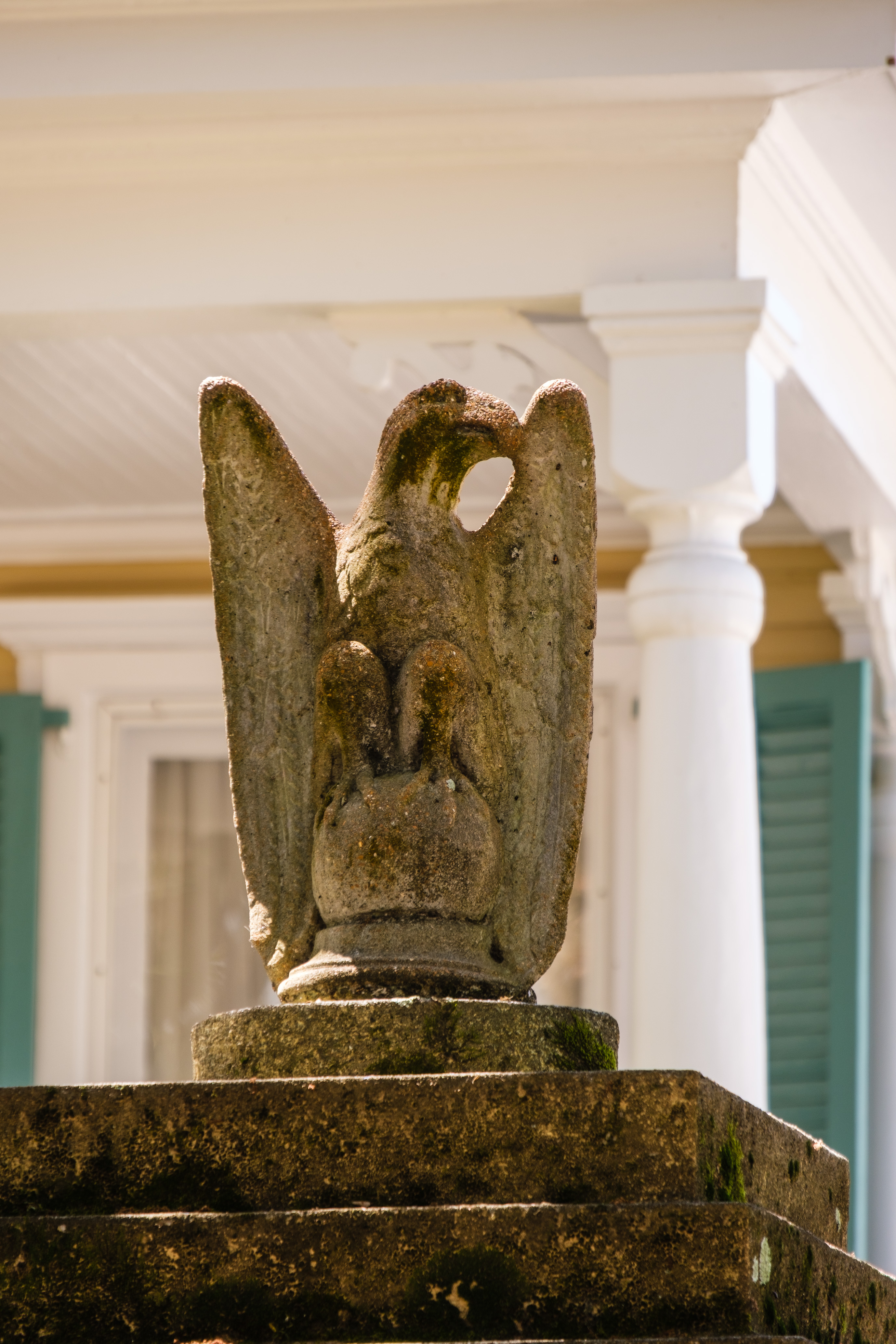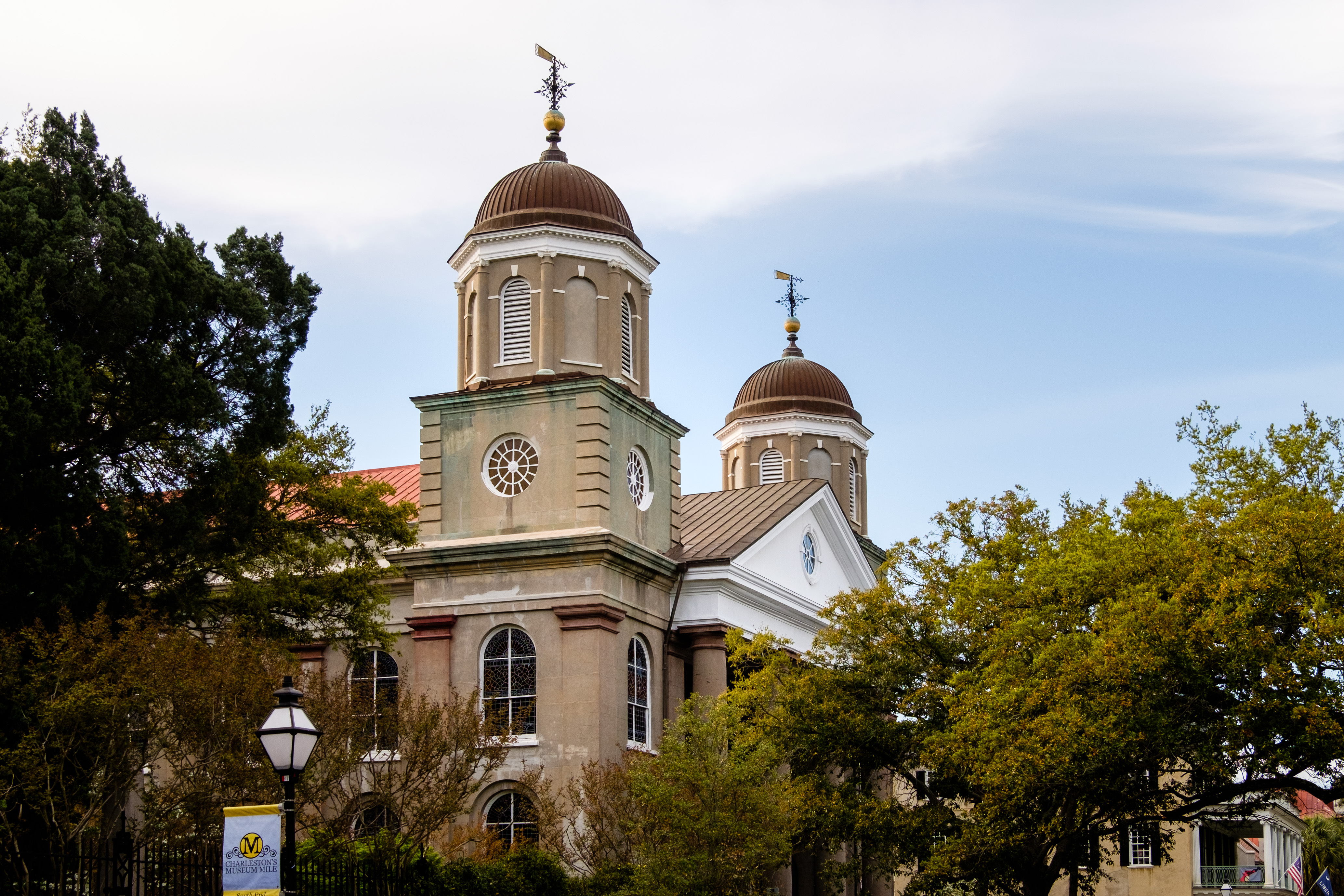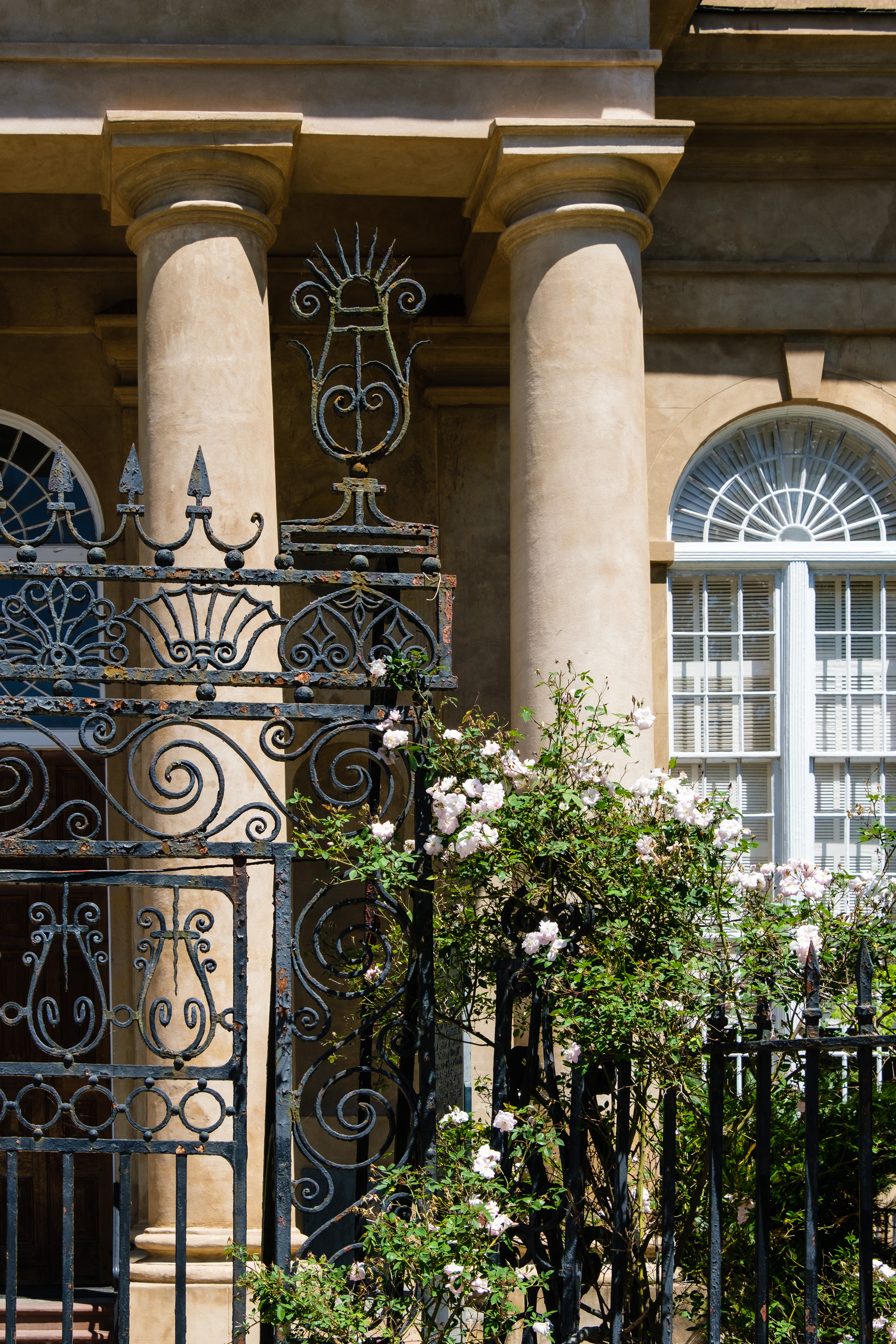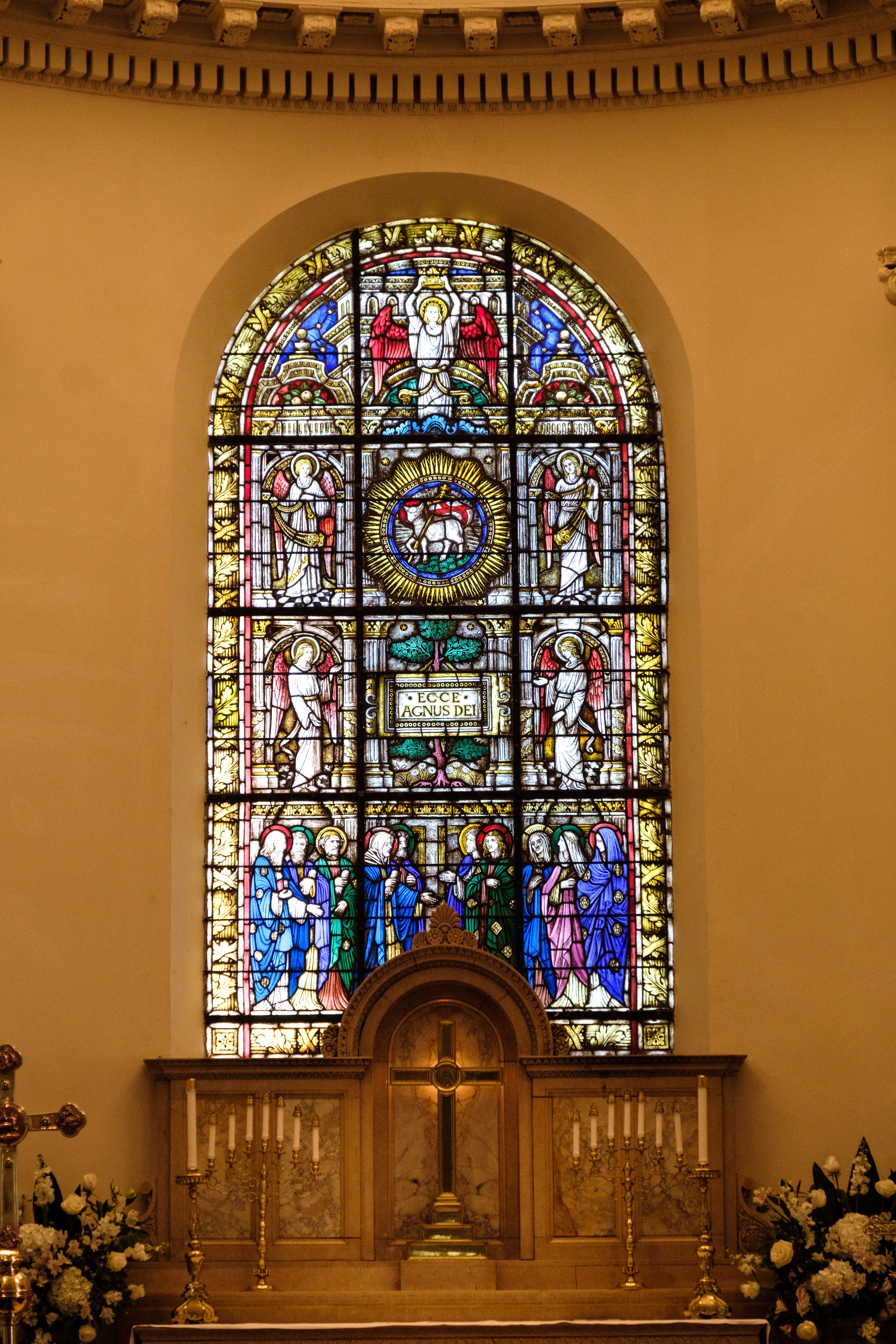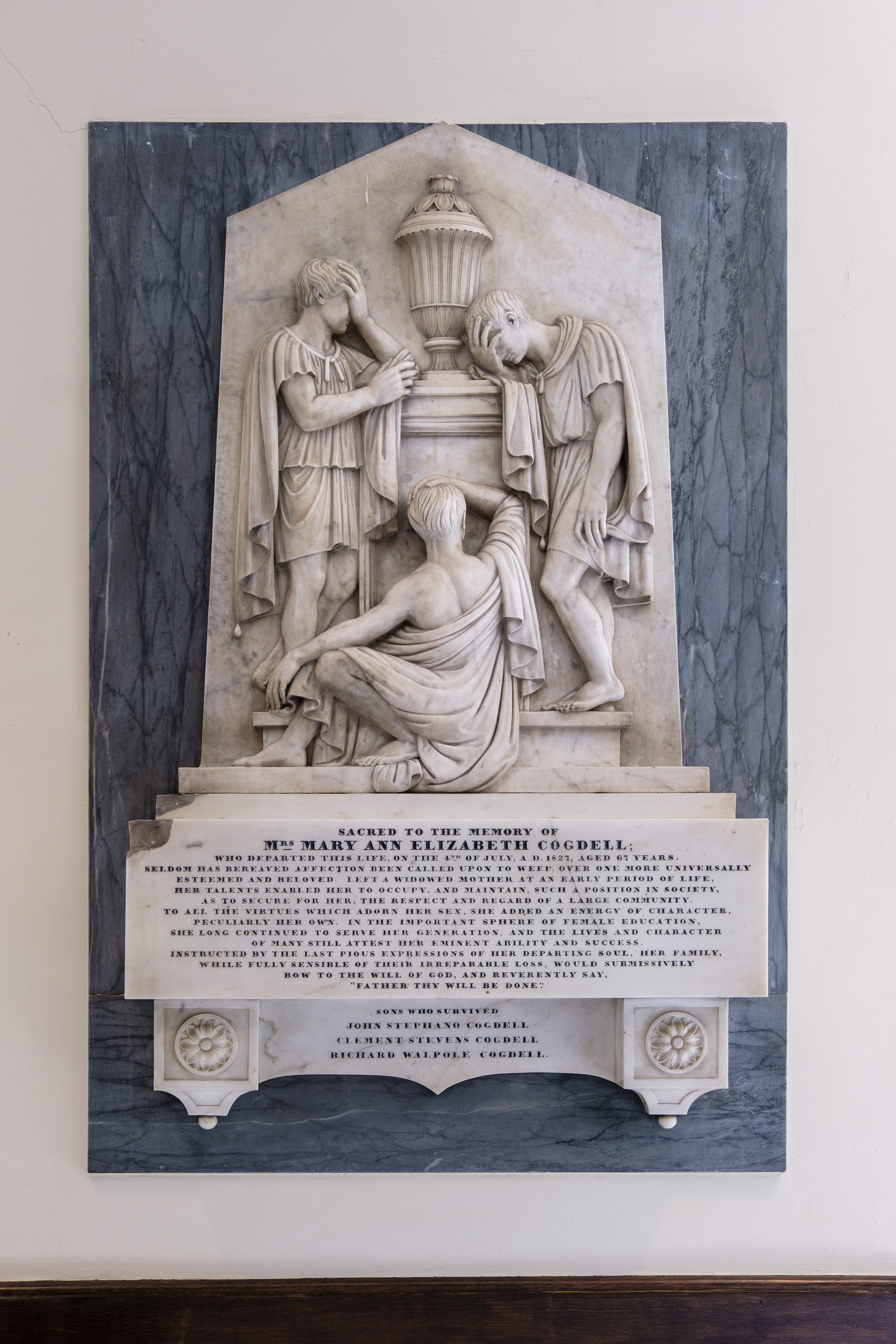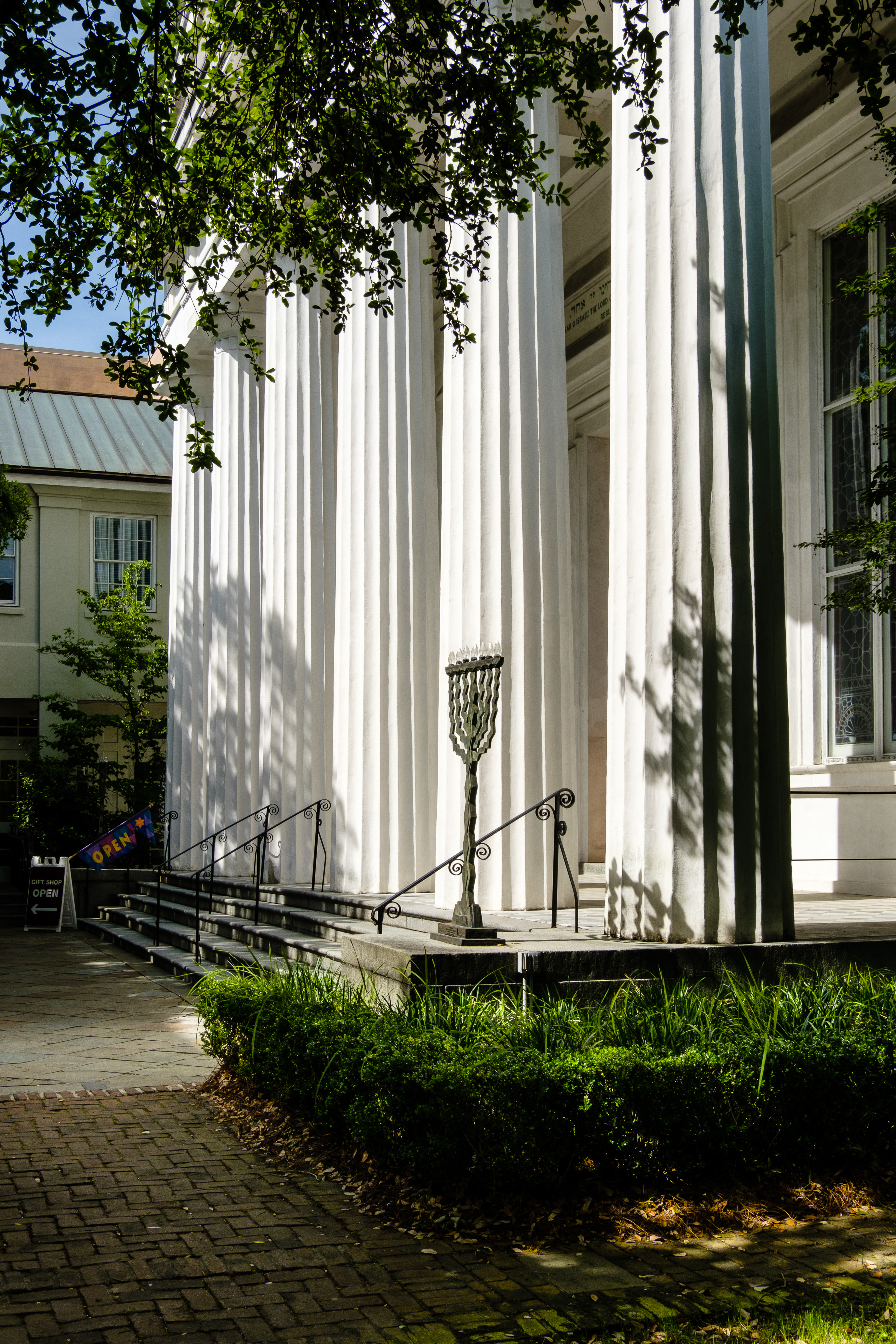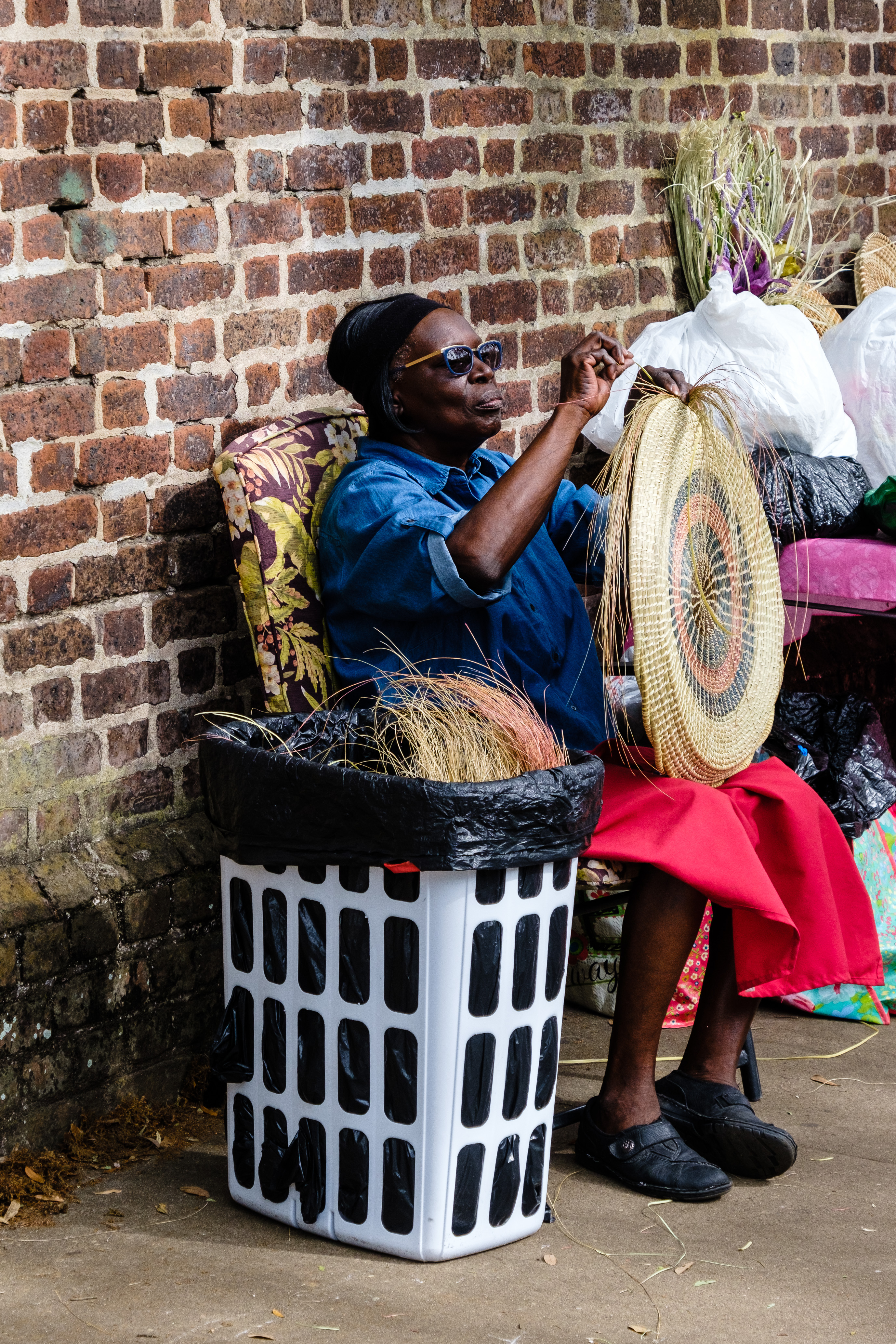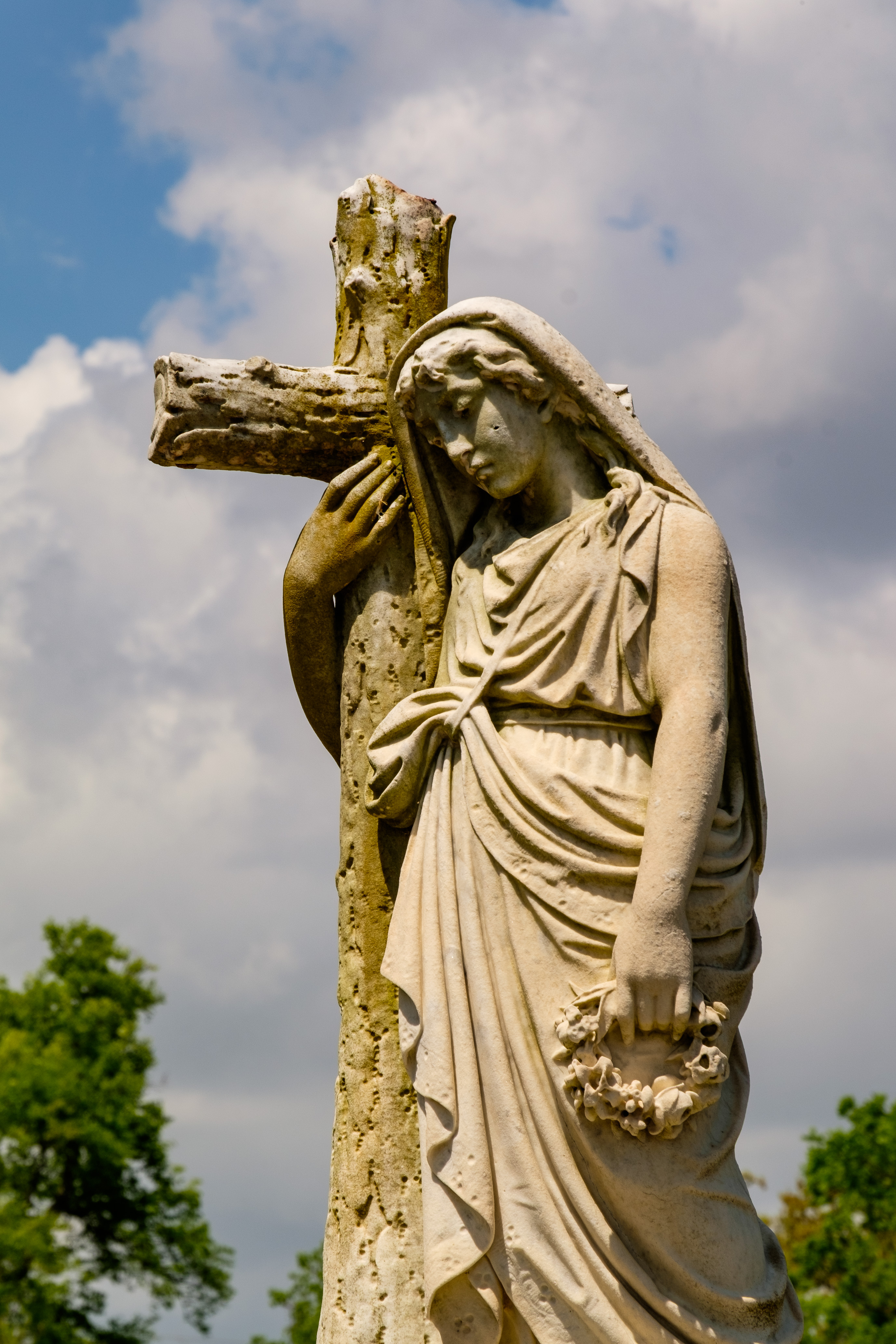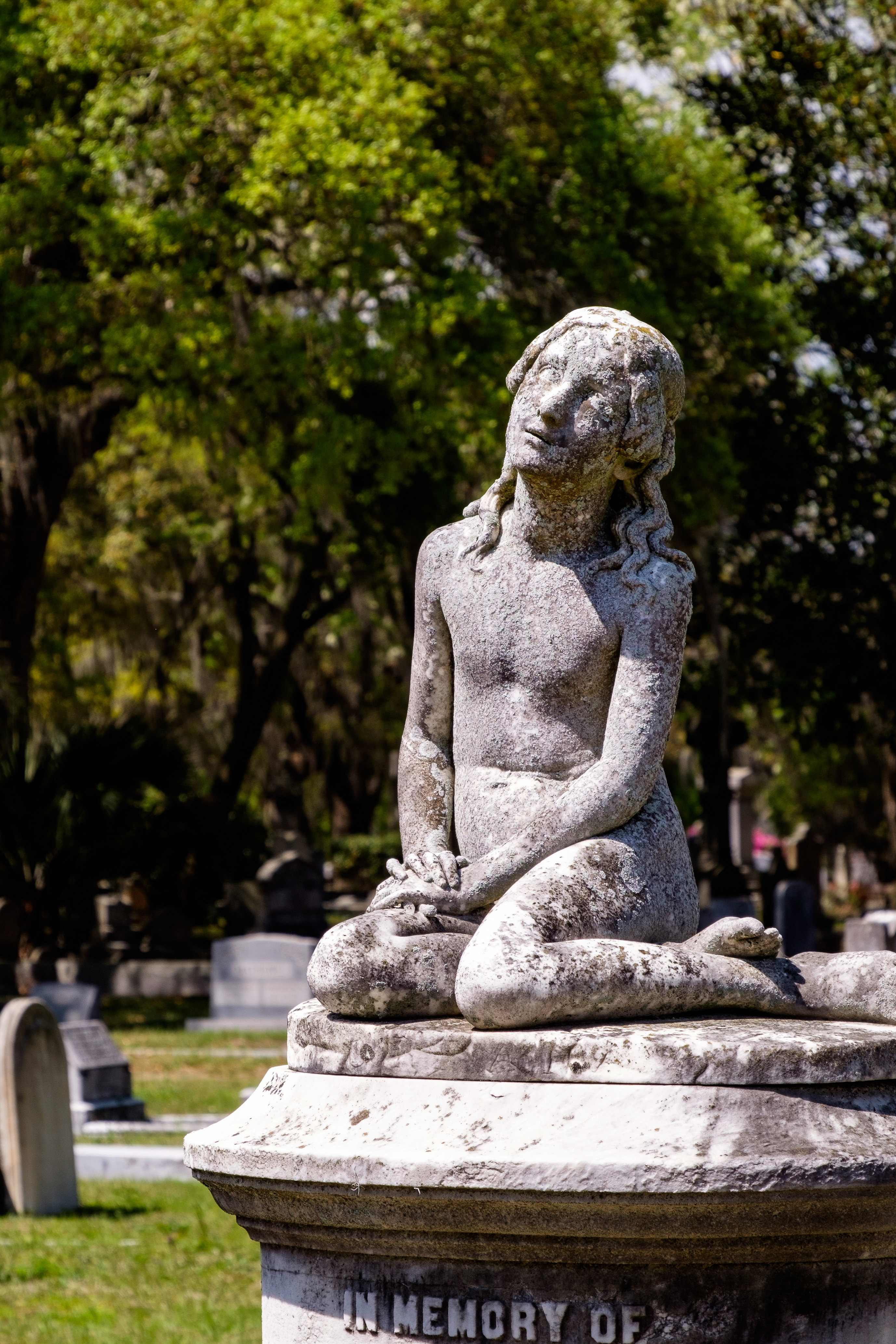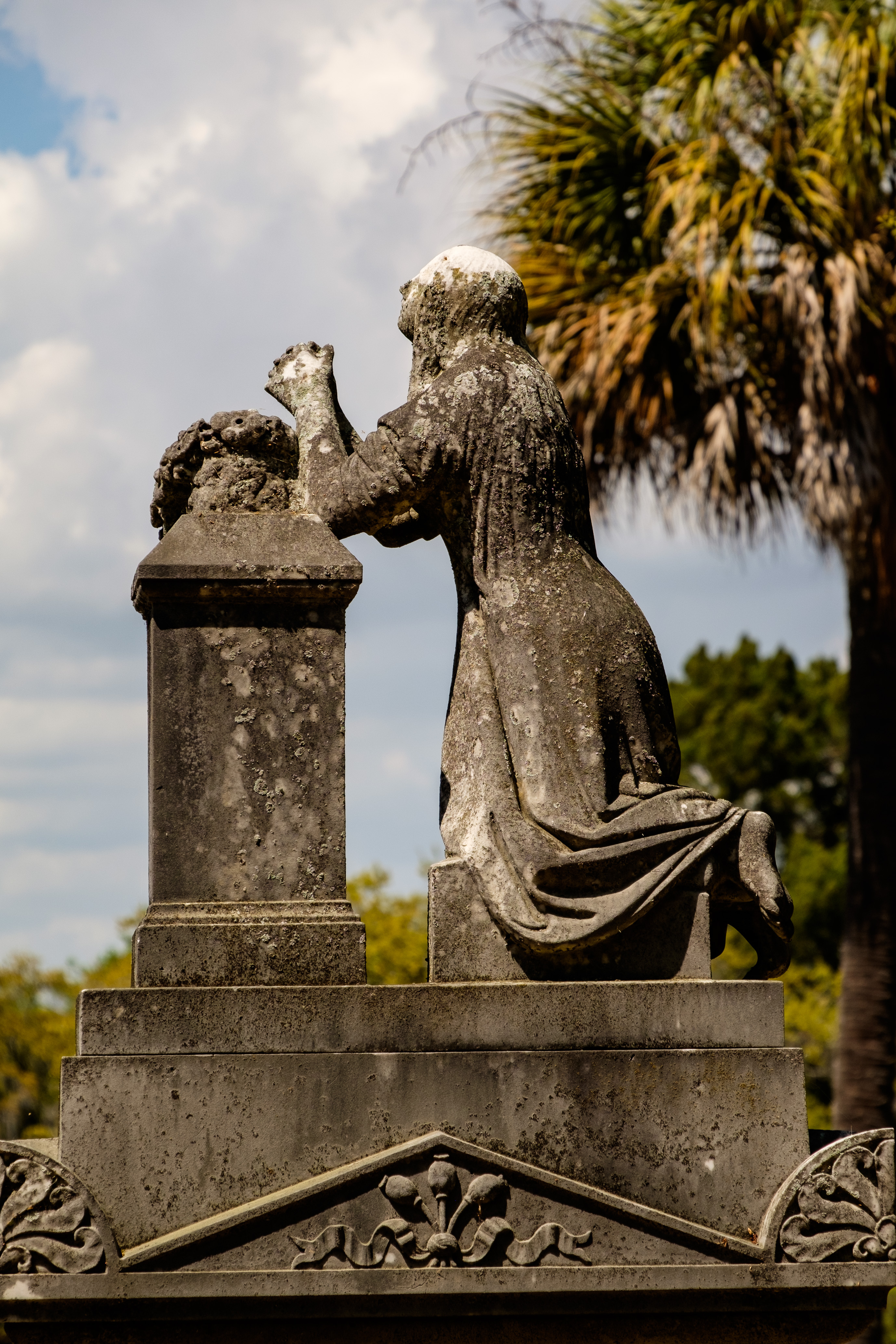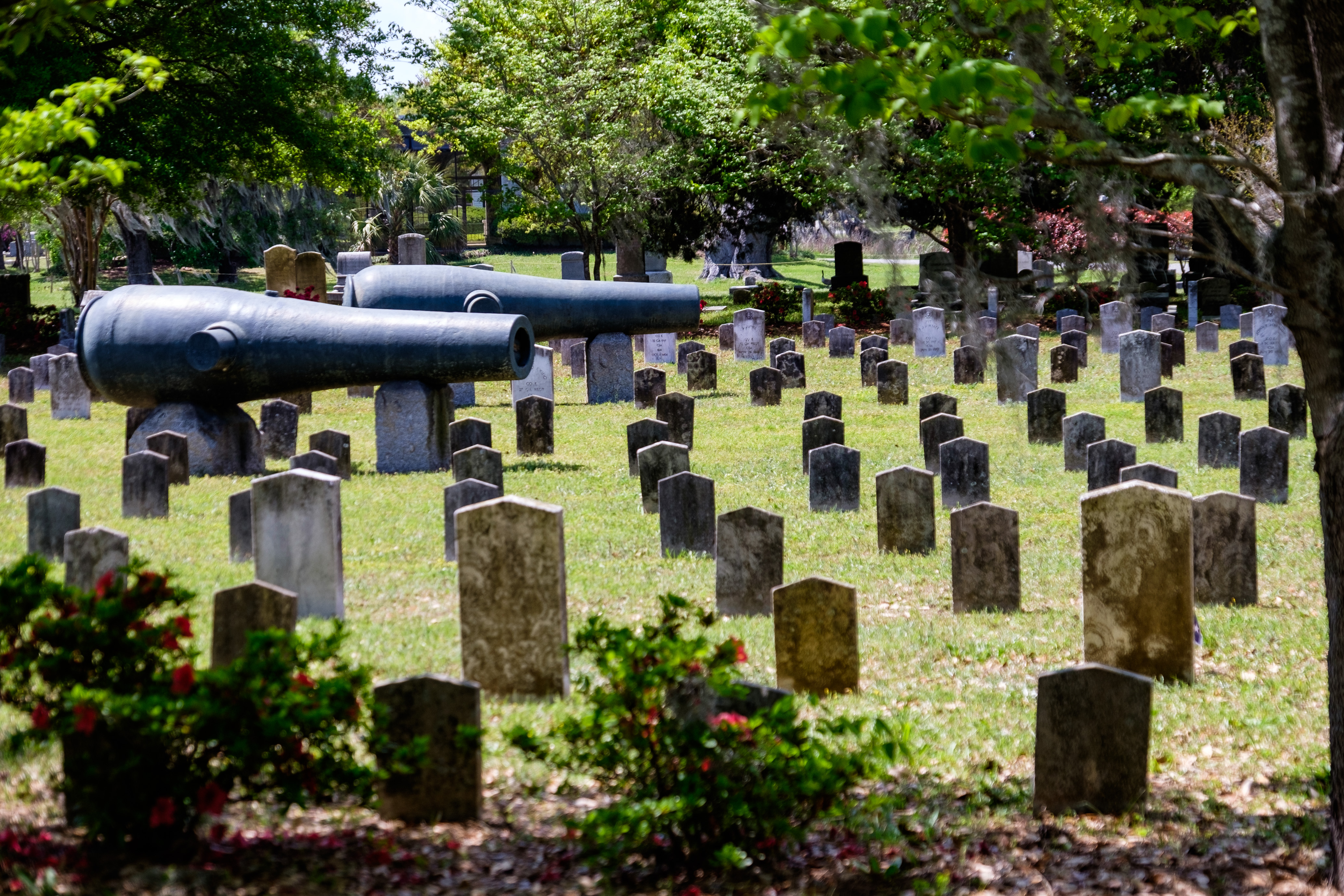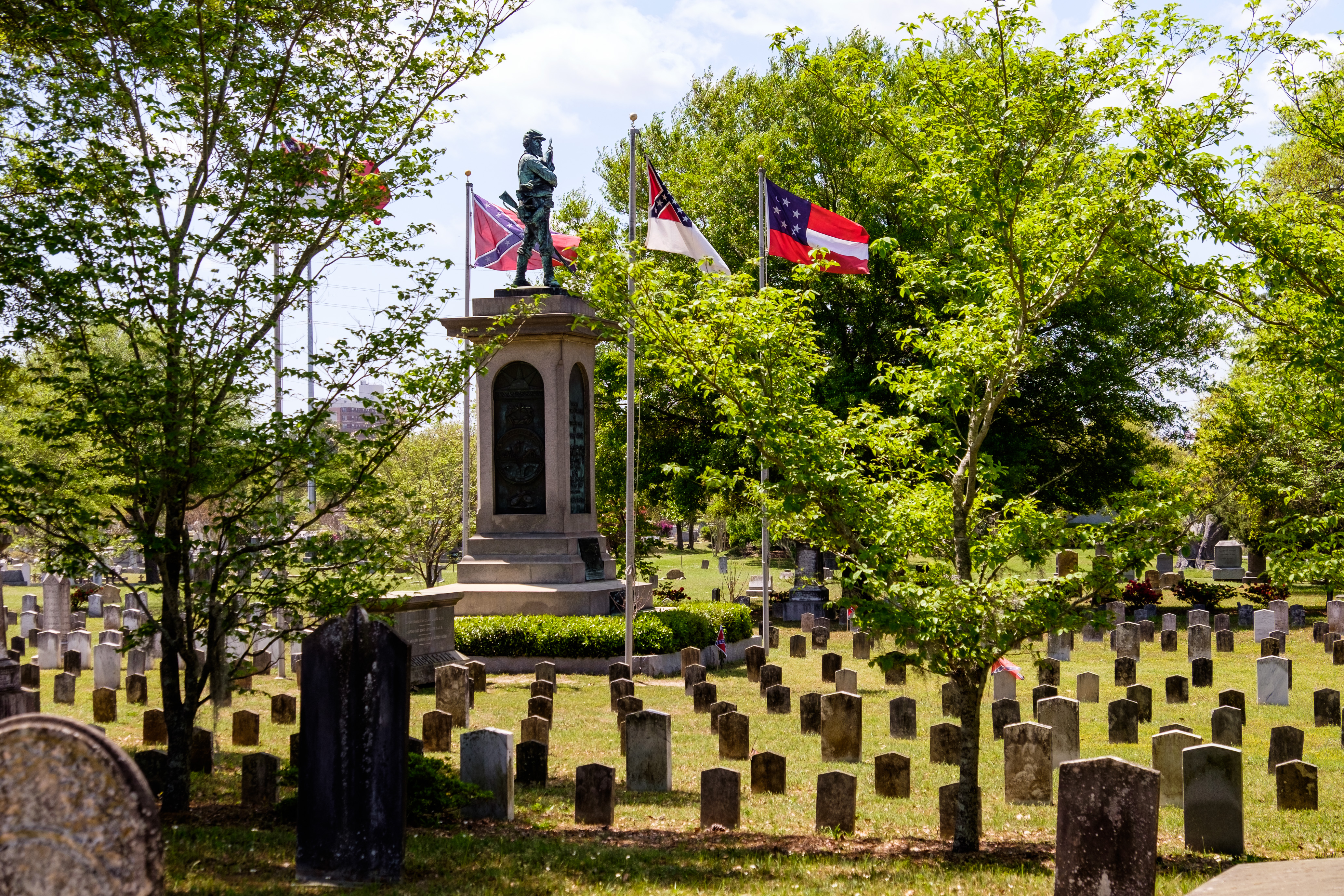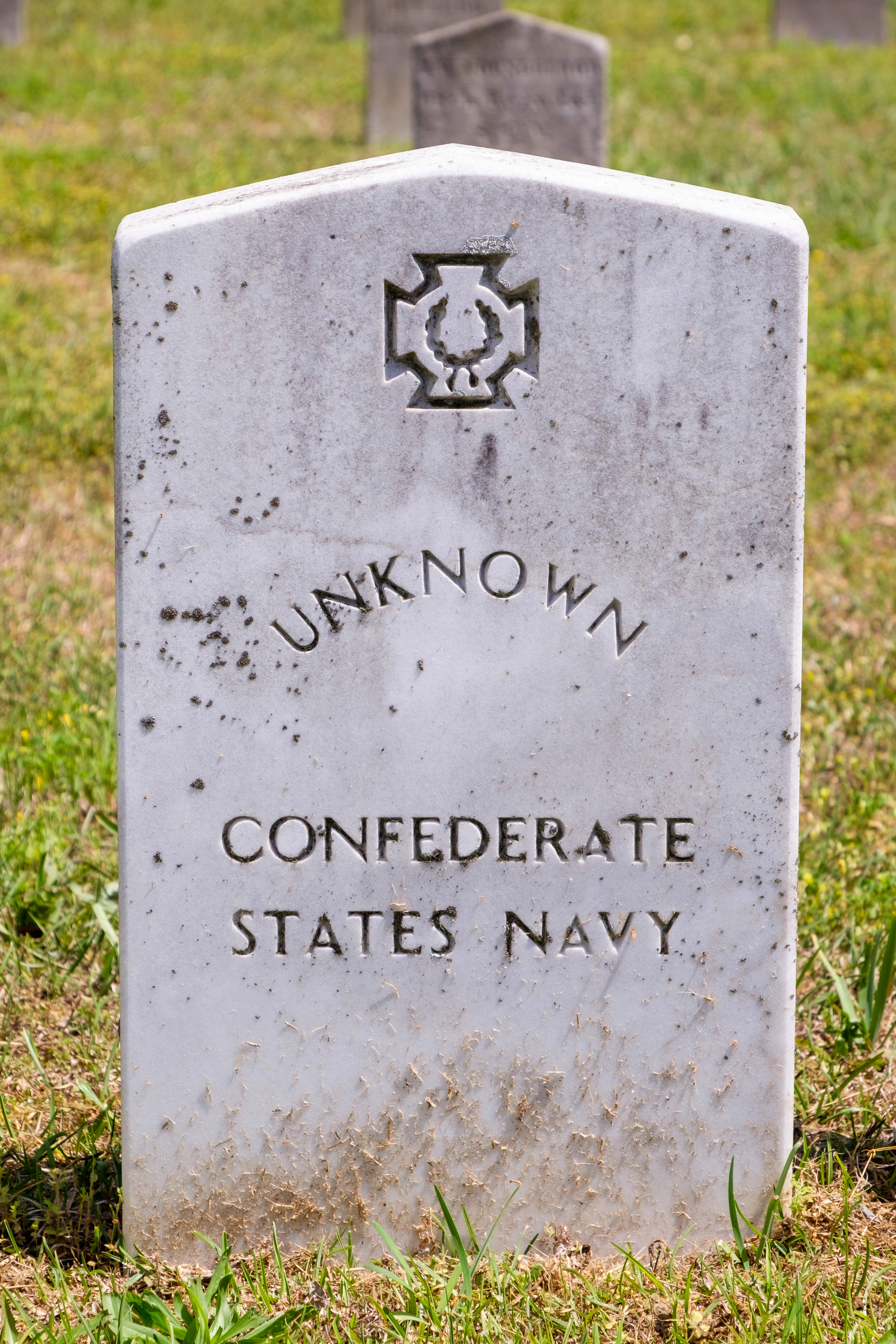Images of Charleston.
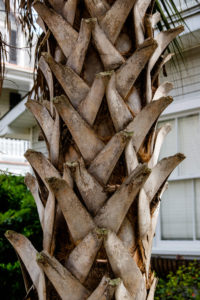
Palmetto tree, Charleston, South Carolina
As my journeys in the US South continue please join me on a walking tour of old Charleston. It’s a beautiful city. Gorgeous architecture and so much has been saved (which is especially amazing given the wars, earthquakes, fires and hurricanes, among other disasters, which the city has faced over the years). It’s said to be one of the South’s best preserved cities. It’s become a real foodie destination, too. A city of churches also called the “Holy City” it is the home of Kahal Kadosh Beth Elohim, one of the oldest Jewish congregations in the United States. There’s a ton to see and do there…but be forewarned that it’s heavy with history. Sometimes too heavy.
The whole city seemed to be awash in spring color while I was there. Flowers and blooming trees everywhere, as you will see below in this set.
The city was founded in 1670 by English colonists and became an important commercial center. It was named Charles Town in honor of King Charles II (later changed to Charleston). It was the hub of the Atlantic trade of England’s southern colonies.
During the American Revolution the city was held by the British from 1780 to 1782. On April 12, 1861 Confederate forces fired on the Union forces at Charleston’s Fort Sumter, and the country’s bloodiest war began there.
Although it was badly damaged in the Civil War after years of Union bombardment and a devastating fire early in the war (the Great Fire of 1861), when Union General William Tecumseh Sherman’s forces marched through South Carolina in 1865 they ultimately bypassed Charleston and headed for Columbia. Otherwise, had Charleston not been spared, it would be a far different city today.
The city and the surrounding area sure seem to be thriving these days.
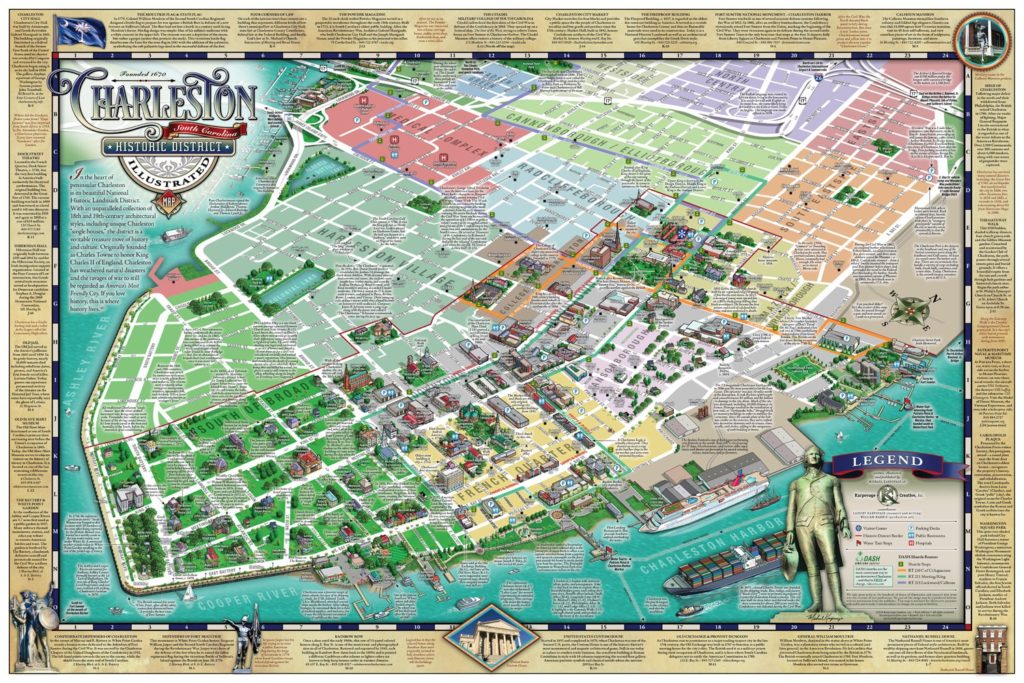
As we walk the streets and marvel at the historic buildings (and especially the surviving ante bellum buildings) of Charleston, let’s not forget that it was a city built on, and sustained by, slave labor and the slave economy for almost 200 years. It’s said that a history of slavery in America begins with Charleston, which some call the nation’s capital of the slave trade. It is estimated that almost half of all enslaved Africans brought into the country passed through Charleston Harbor most at Gadsden’s Wharf. That is a very sobering reflection, to say the least, as one explores the city.
In this post after the Charleston walkabout we’ll also visit Magnolia Cemetery (1850) on the outskirts of the city (over 30,000 are buried there) on the banks of the Cooper River. At Magnolia are also the graves of over 2,000 Confederate soldiers buried in a special Confederate section that includes five Confederate generals and 14 signers of the Ordinance of Secession. It’s yet another of those places in the South where one turns a corner and history gives a good and hard smack right in the head. I didn’t linger in that part of this otherwise beautiful site. It’s a very well preserved Victorian cemetery with the resting places of the rich and famous of Charleston and dotted with striking monuments. Certainly, for photography it’s quite a visit. I appreciated the warning about the alligators…
That’s it for beautiful but historically challenging Charleston.
See you in a few weeks for more from the South Carolina Lowcountry as we visit some of the surviving plantations, including an incredible 80 acre (c. 32 hectares) blackwater swamp at the former Dean Plantation. We’ll then start the drive back up north along the coast after that post.
Click on (or tap) an image to expand it (and use the arrow to the right on an expanded image to go through the set, if preferred over scrolling down in the post).
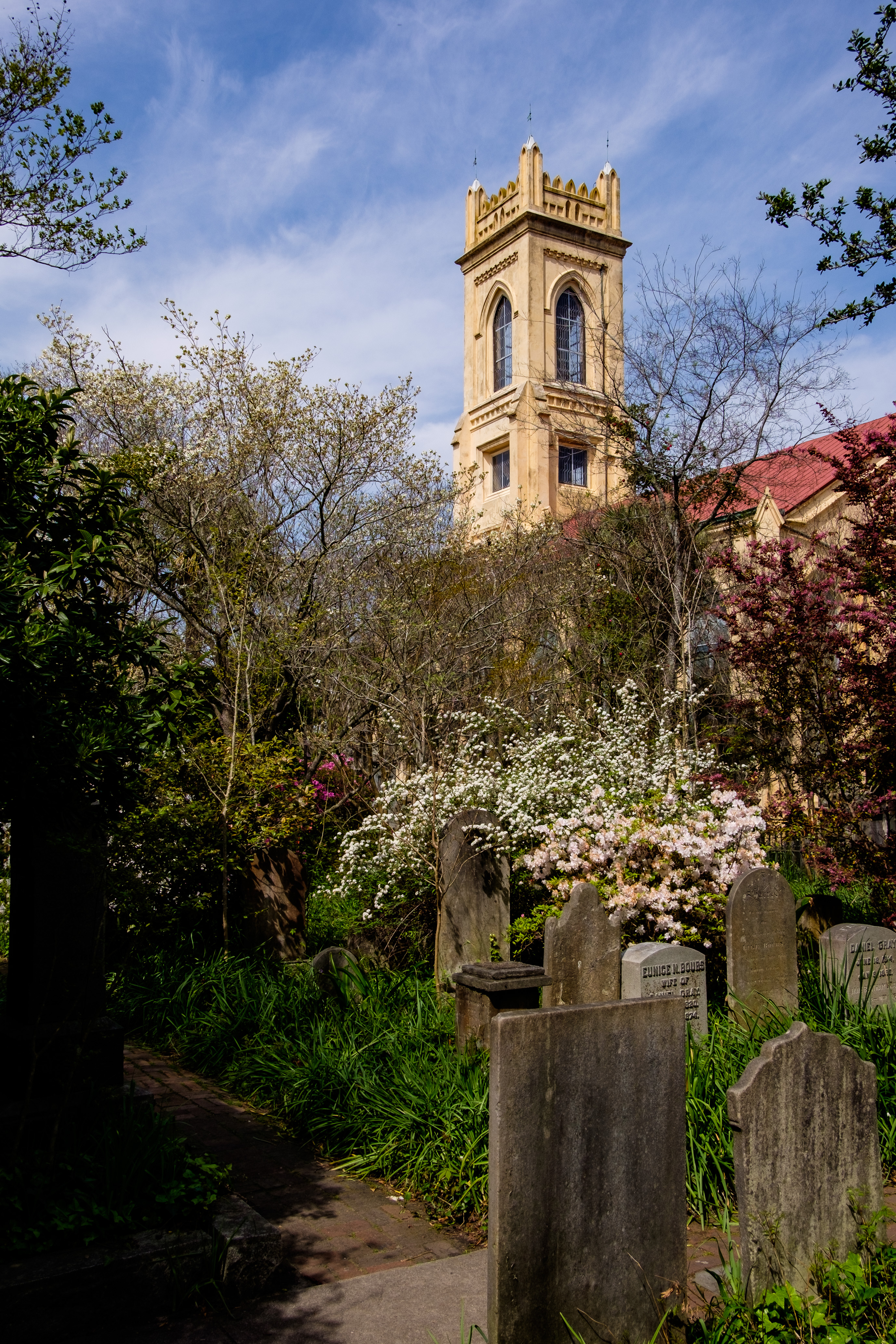
Unitarian Church in Charleston (originally built for a Society of Dissenters congregation in 1787), Charleston, South Carolina

Unitarian Church in Charleston (originally built for a Society of Dissenters congregation in 1787), Charleston, South Carolina

Unitarian Church in Charleston (originally built for a Society of Dissenters congregation in 1787), Charleston, South Carolina
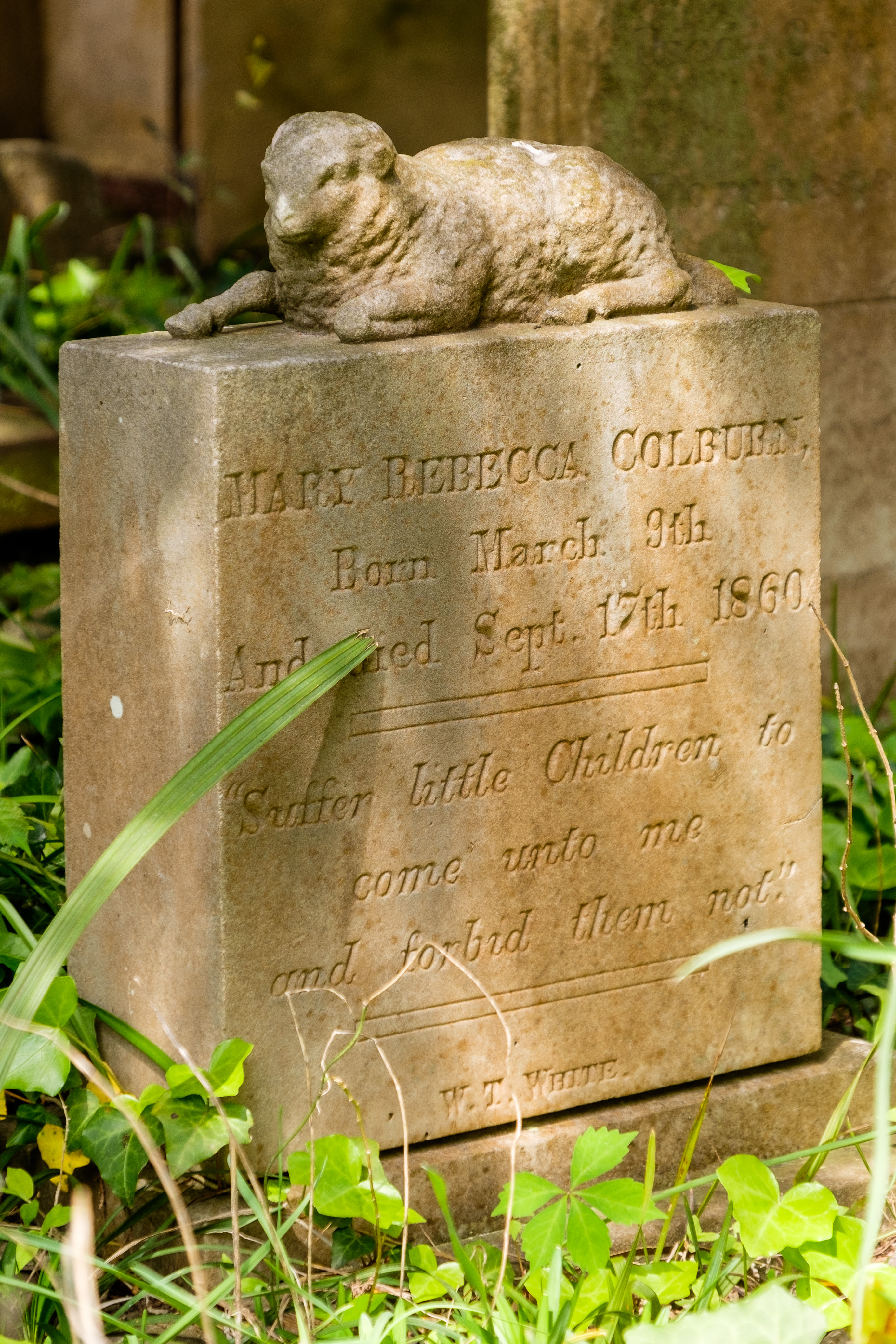
Unitarian Church in Charleston (originally built for a Society of Dissenters congregation in 1787), Charleston, South Carolina
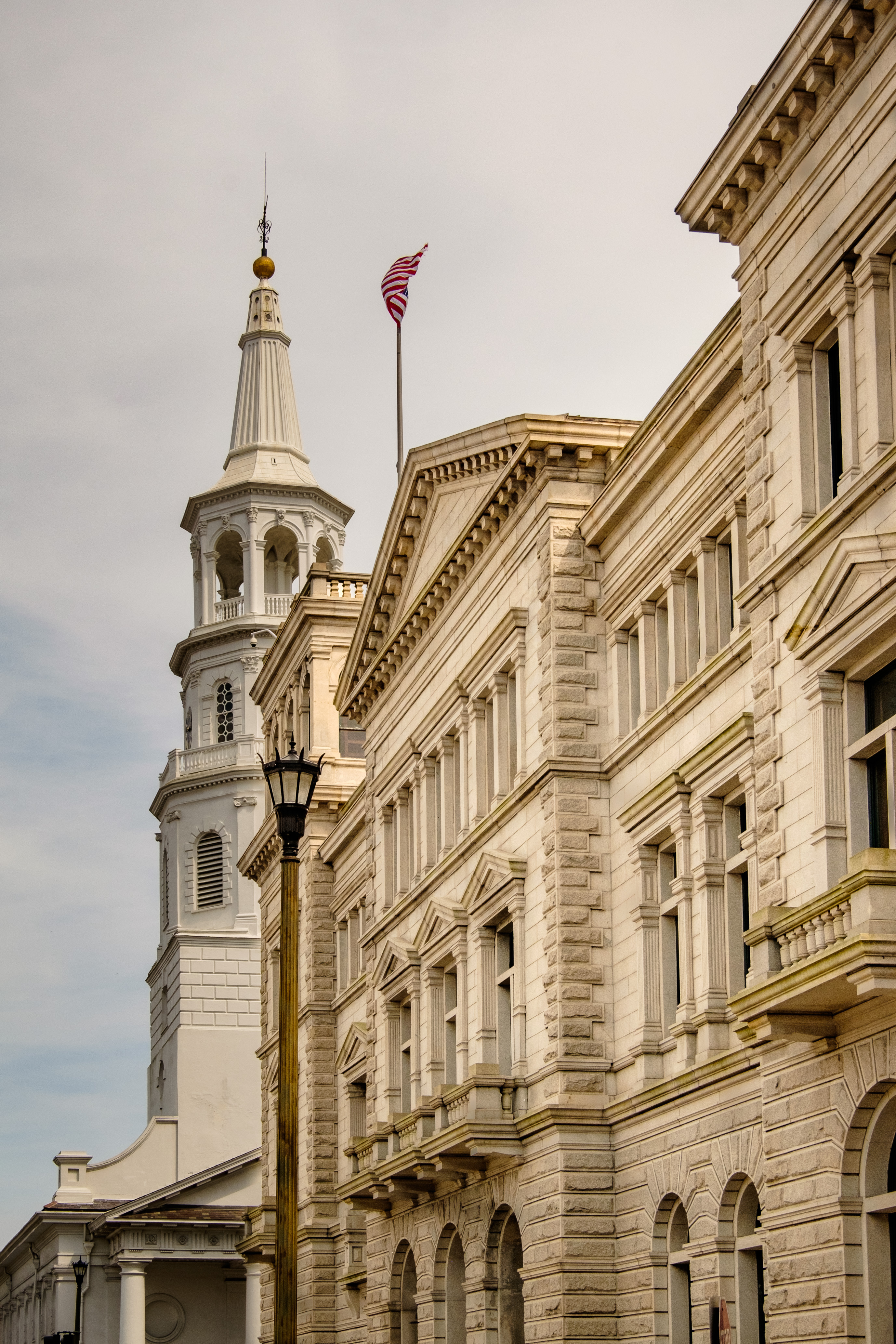
U.S. Post Office and Courthouse (1896) with St. Michael's Episcopal Church (1761) in the background, Charleston, South Carolina


